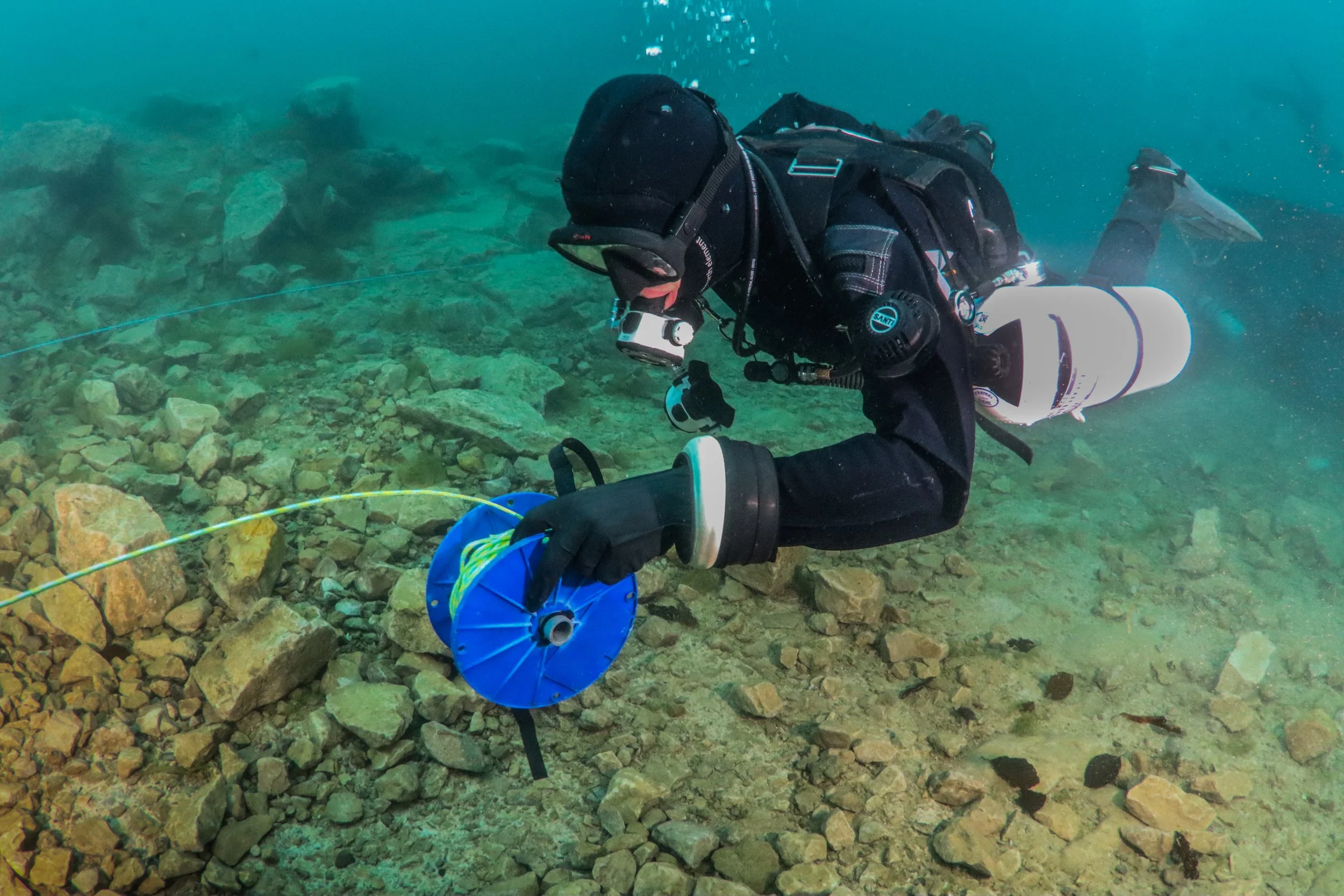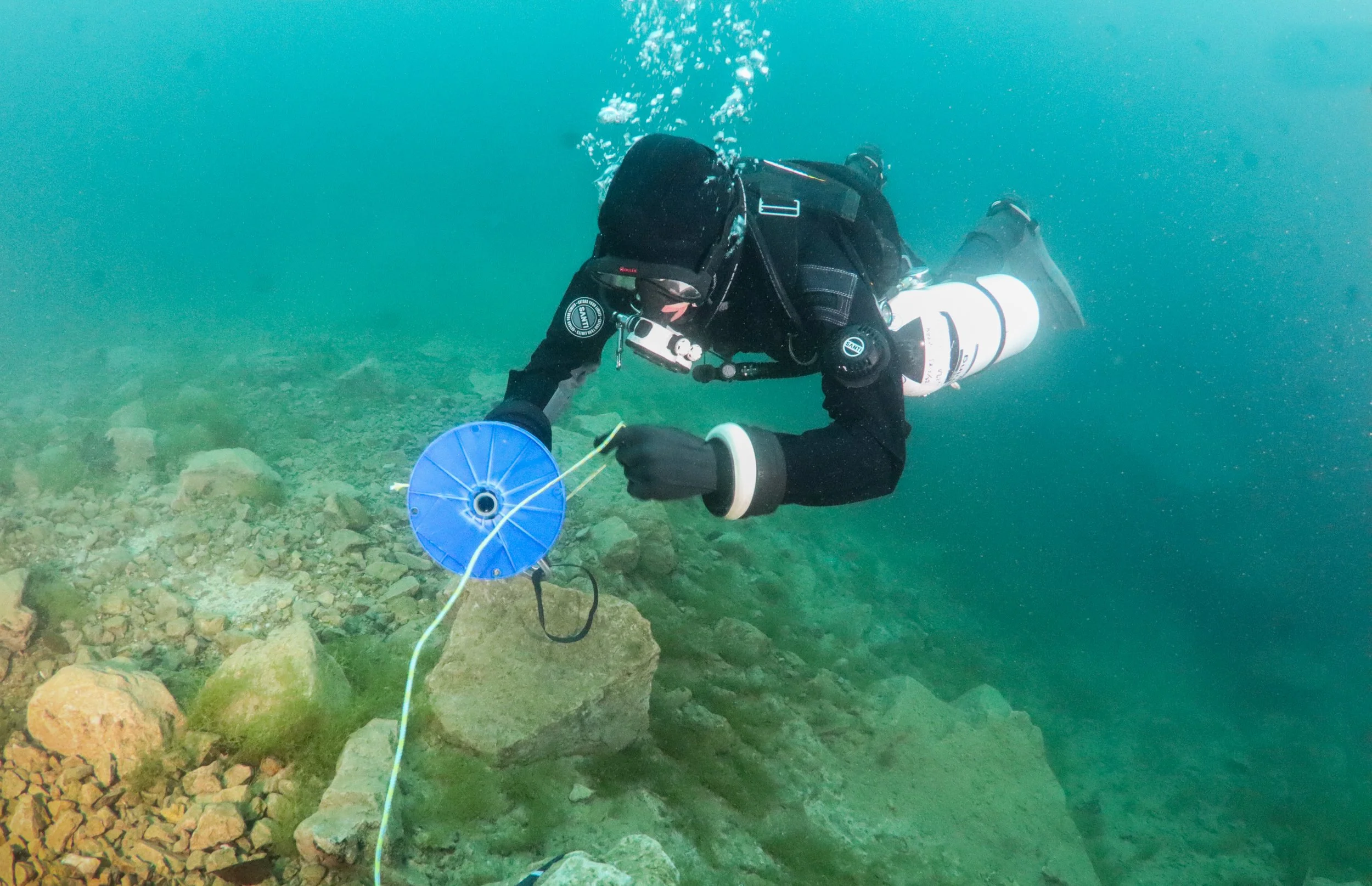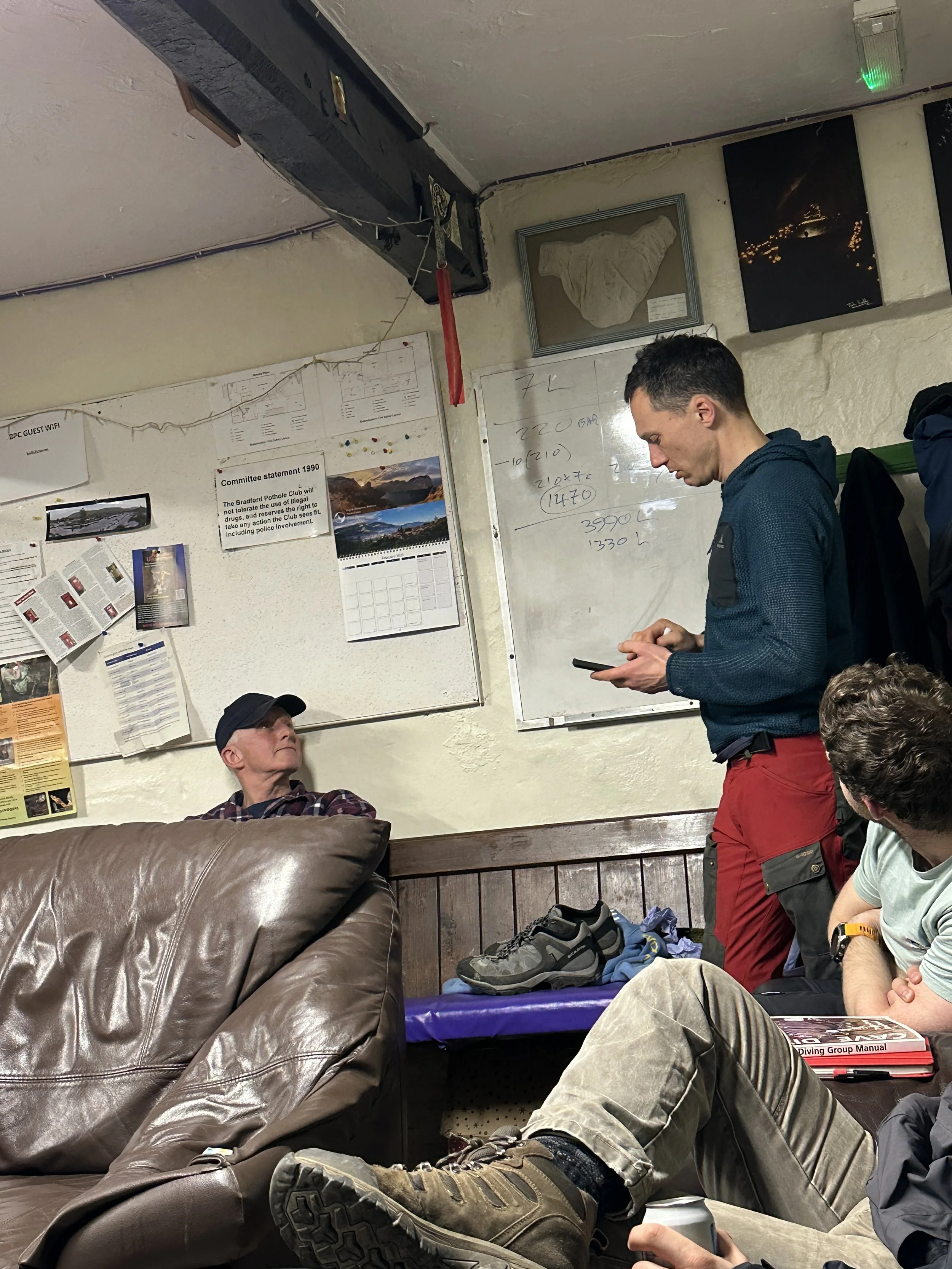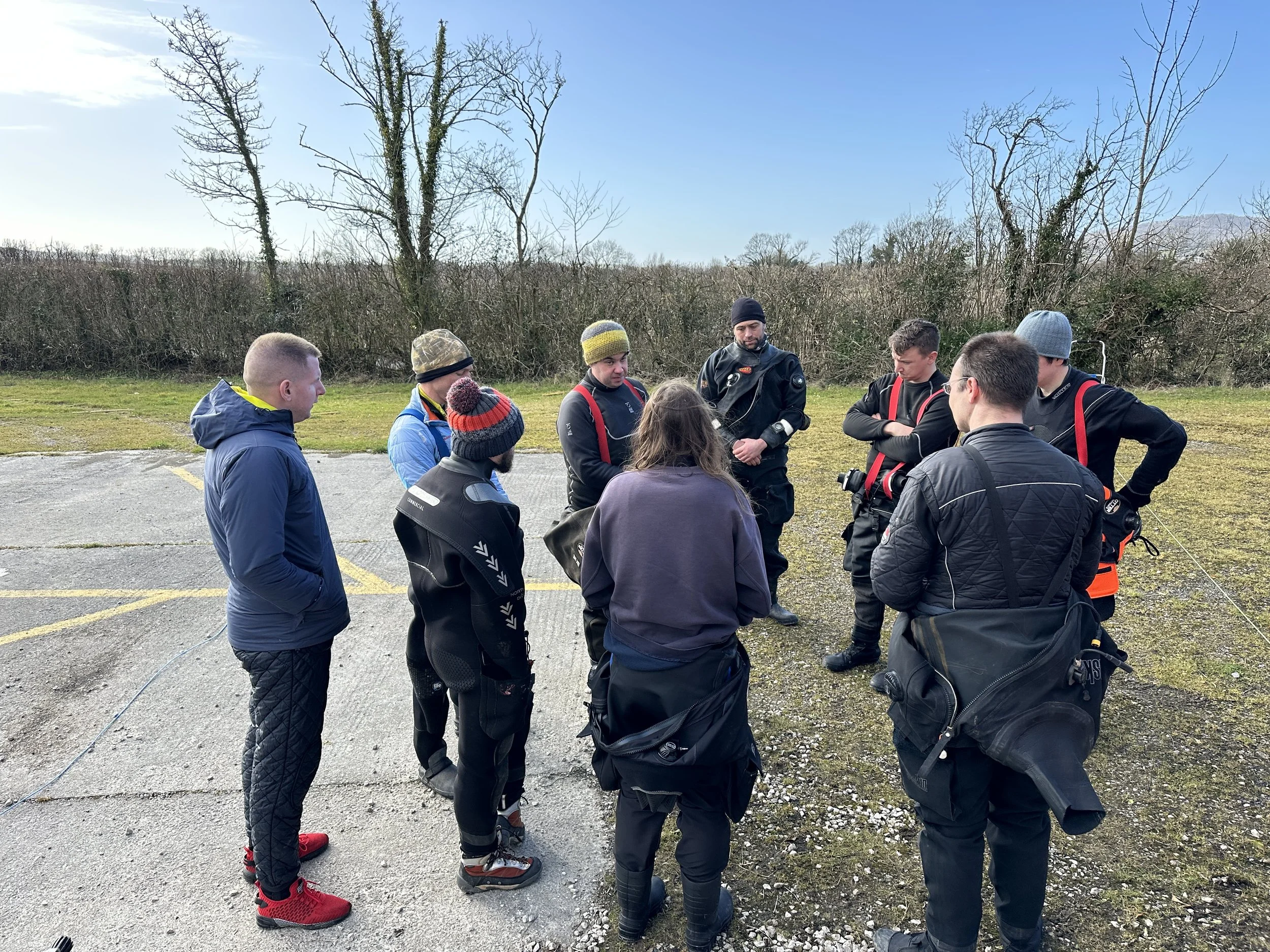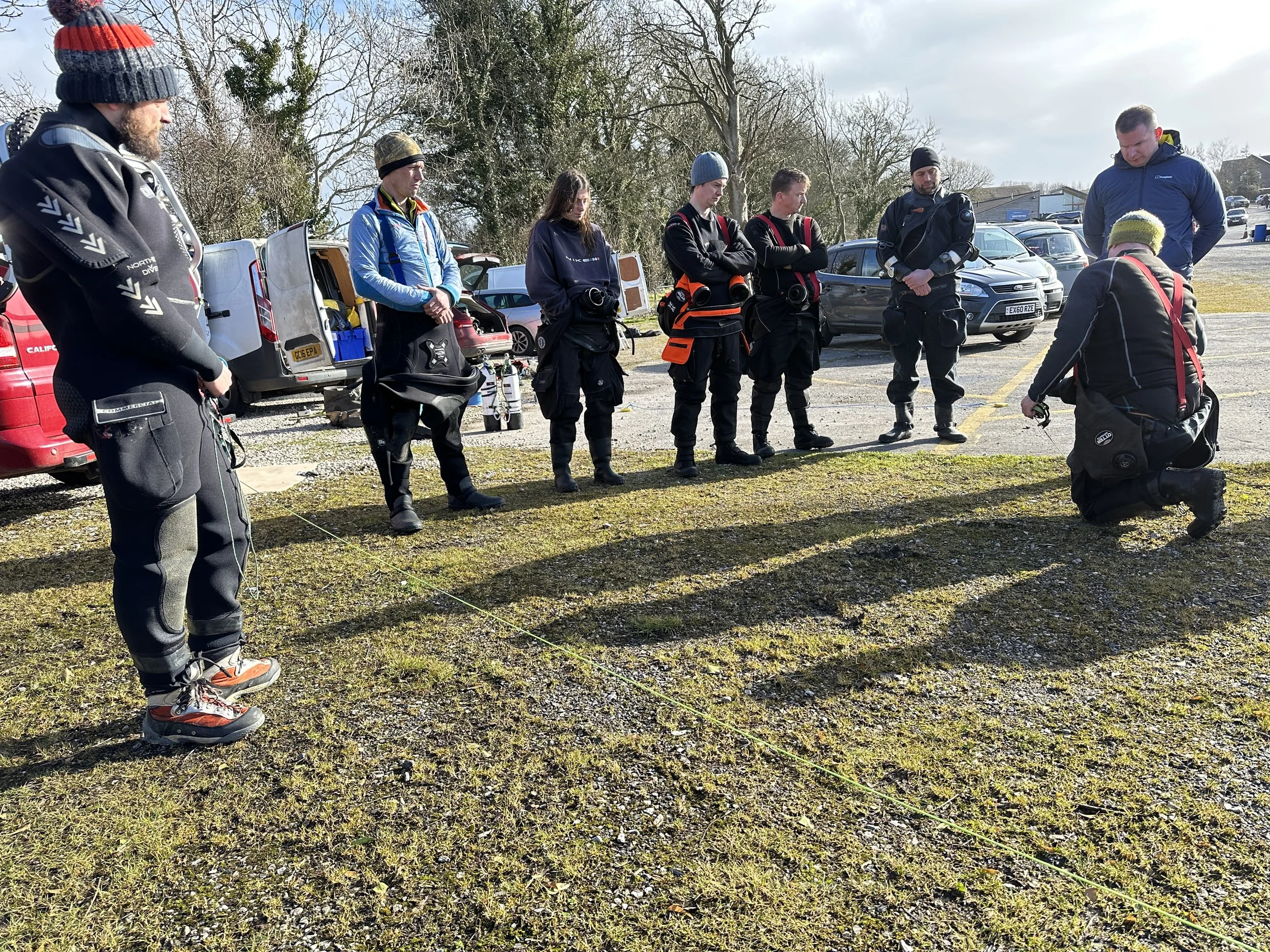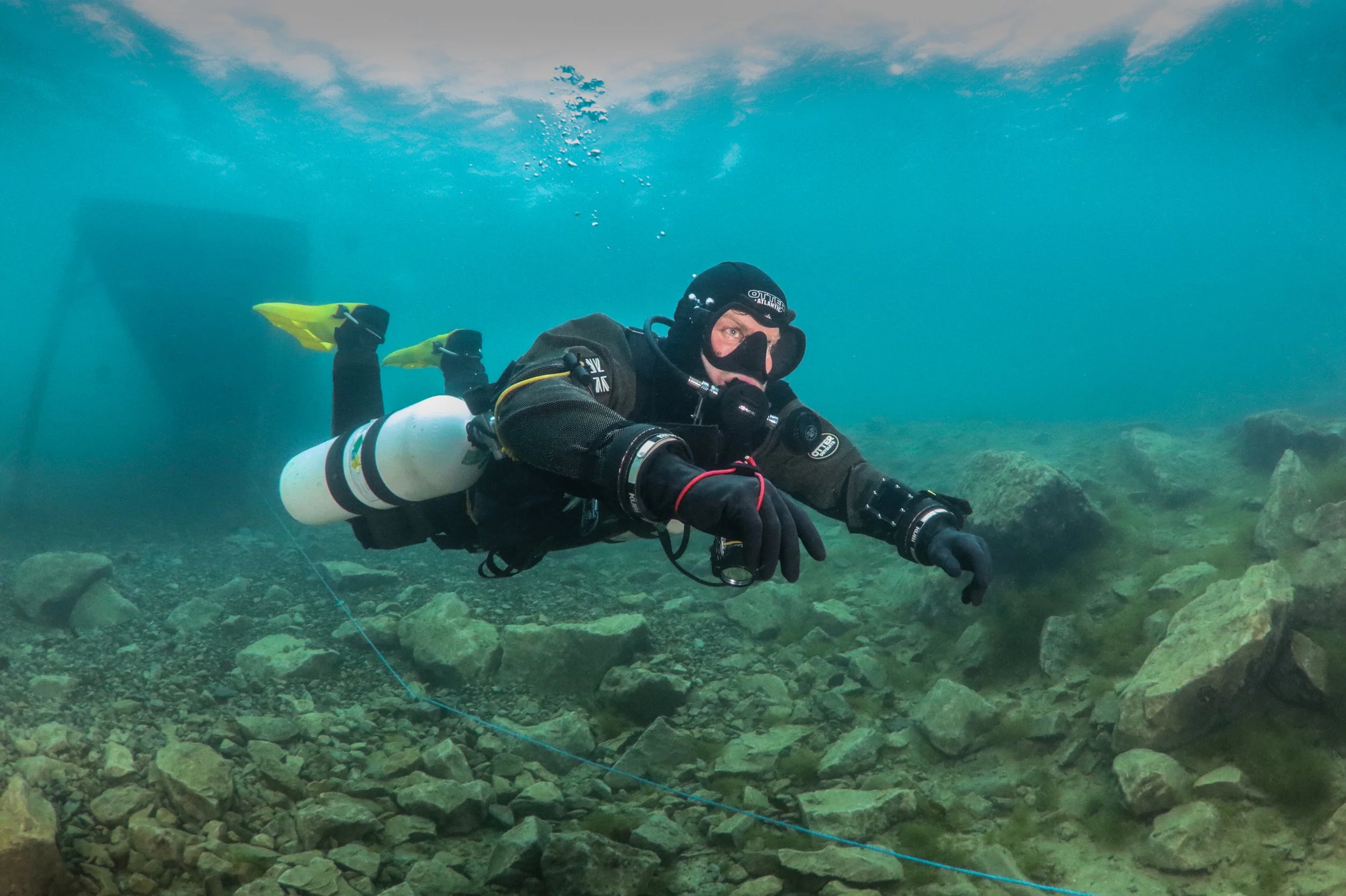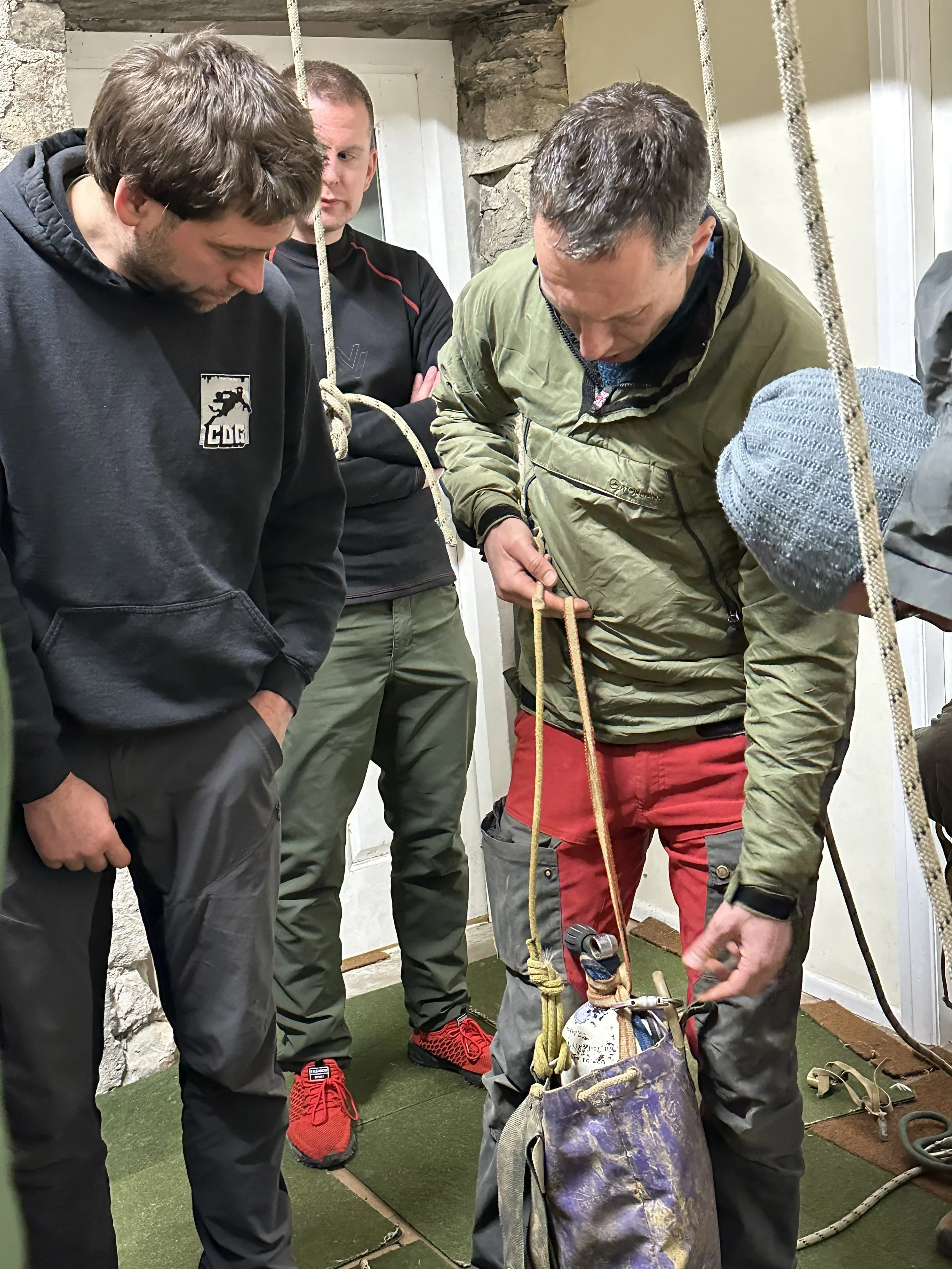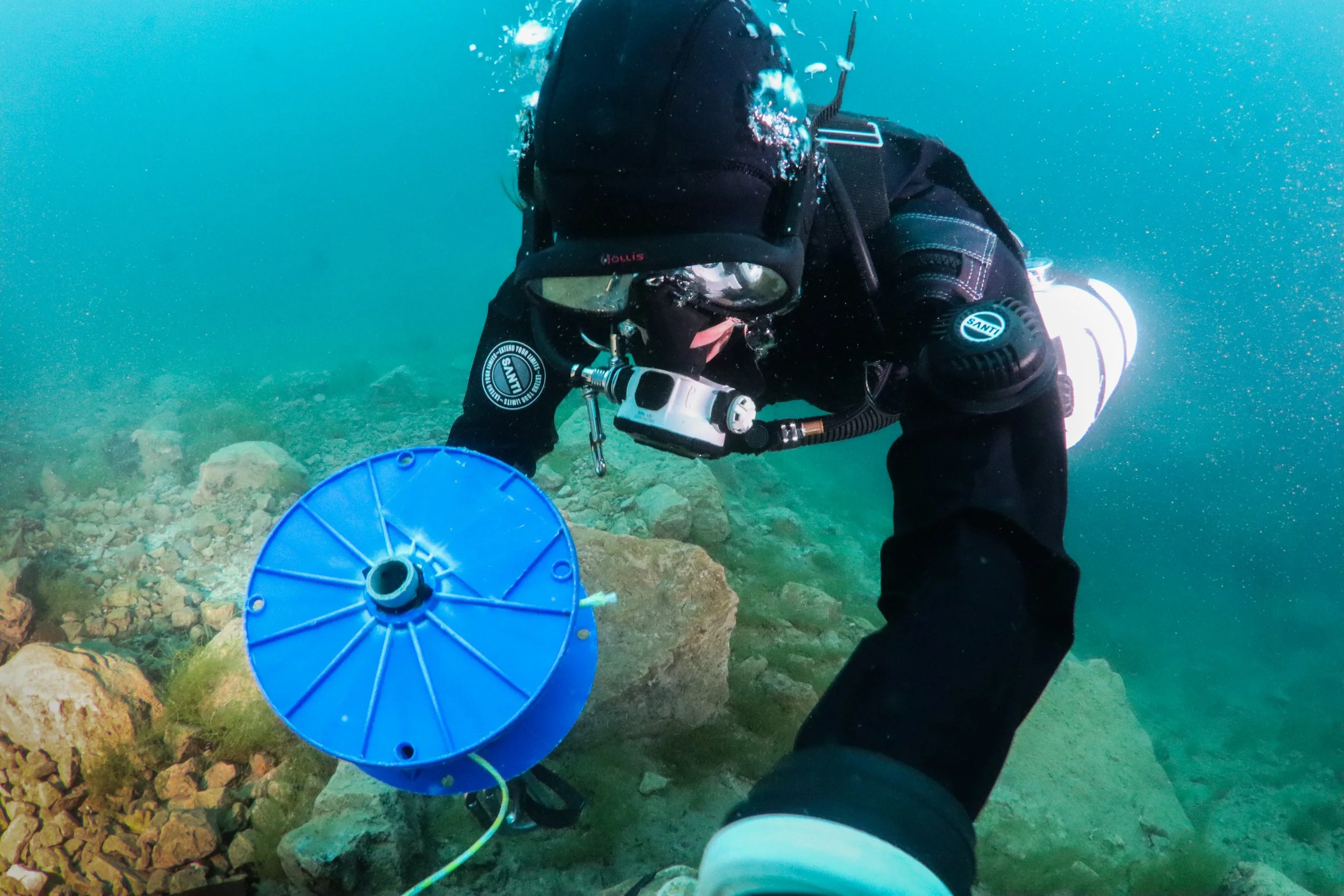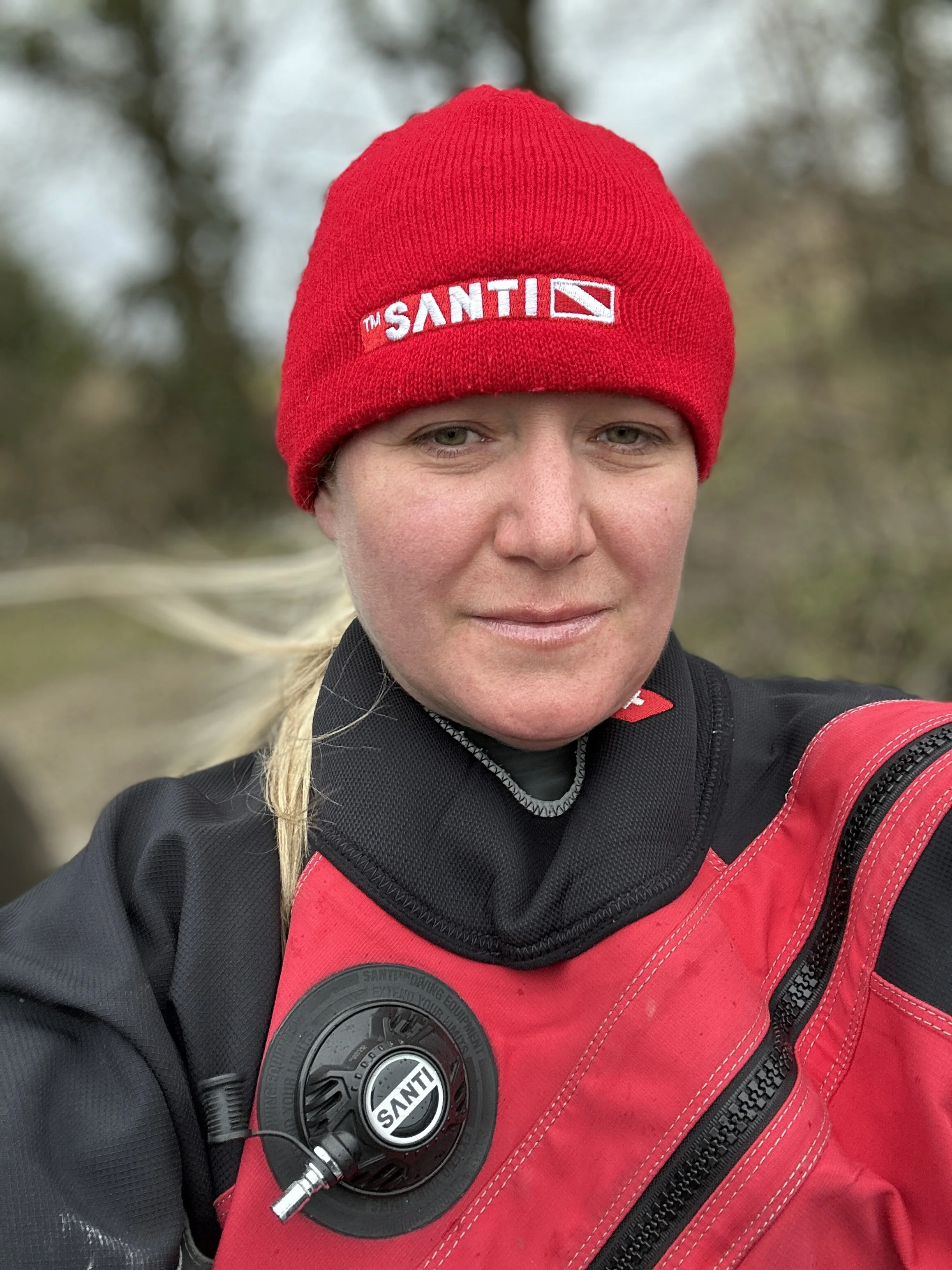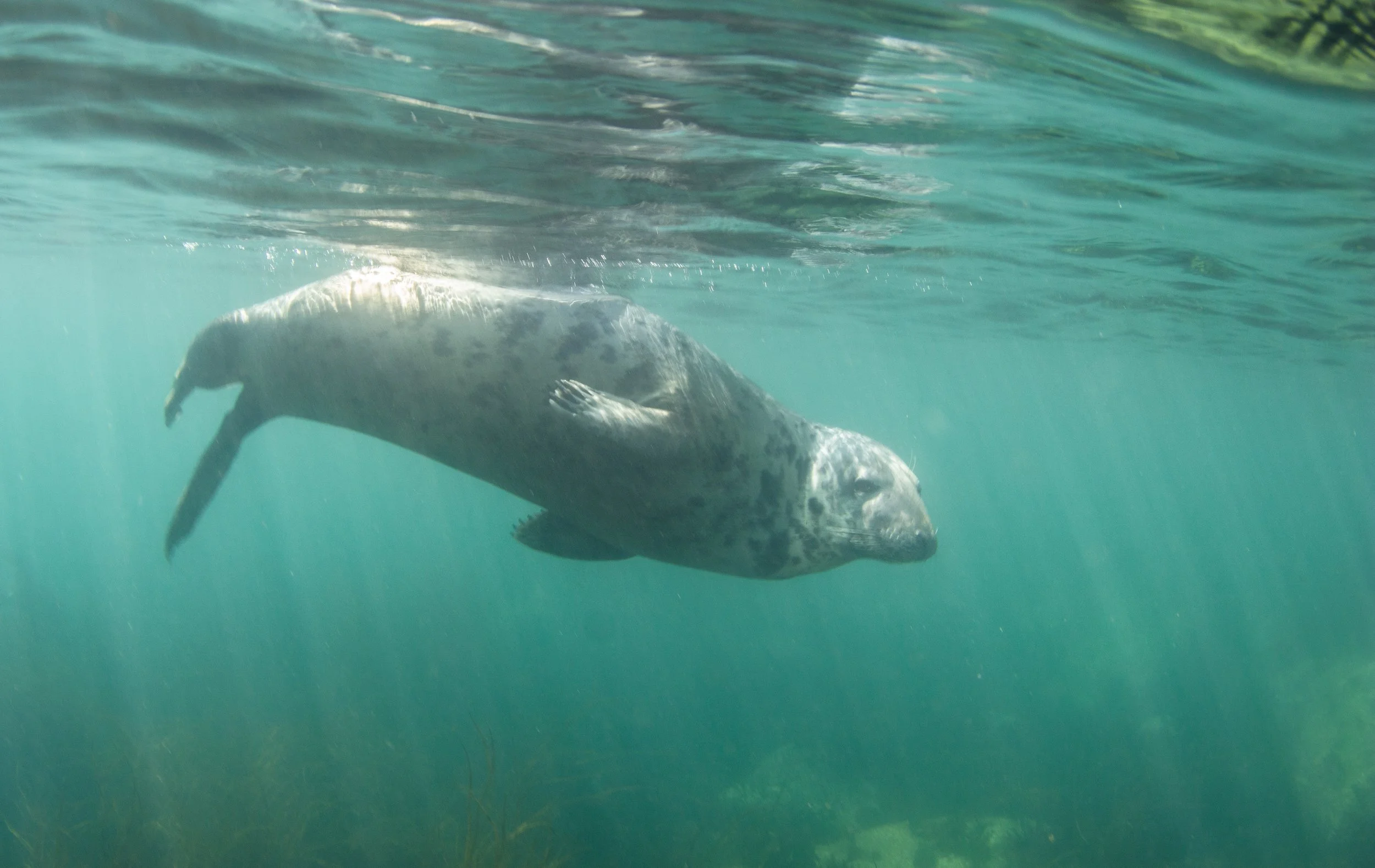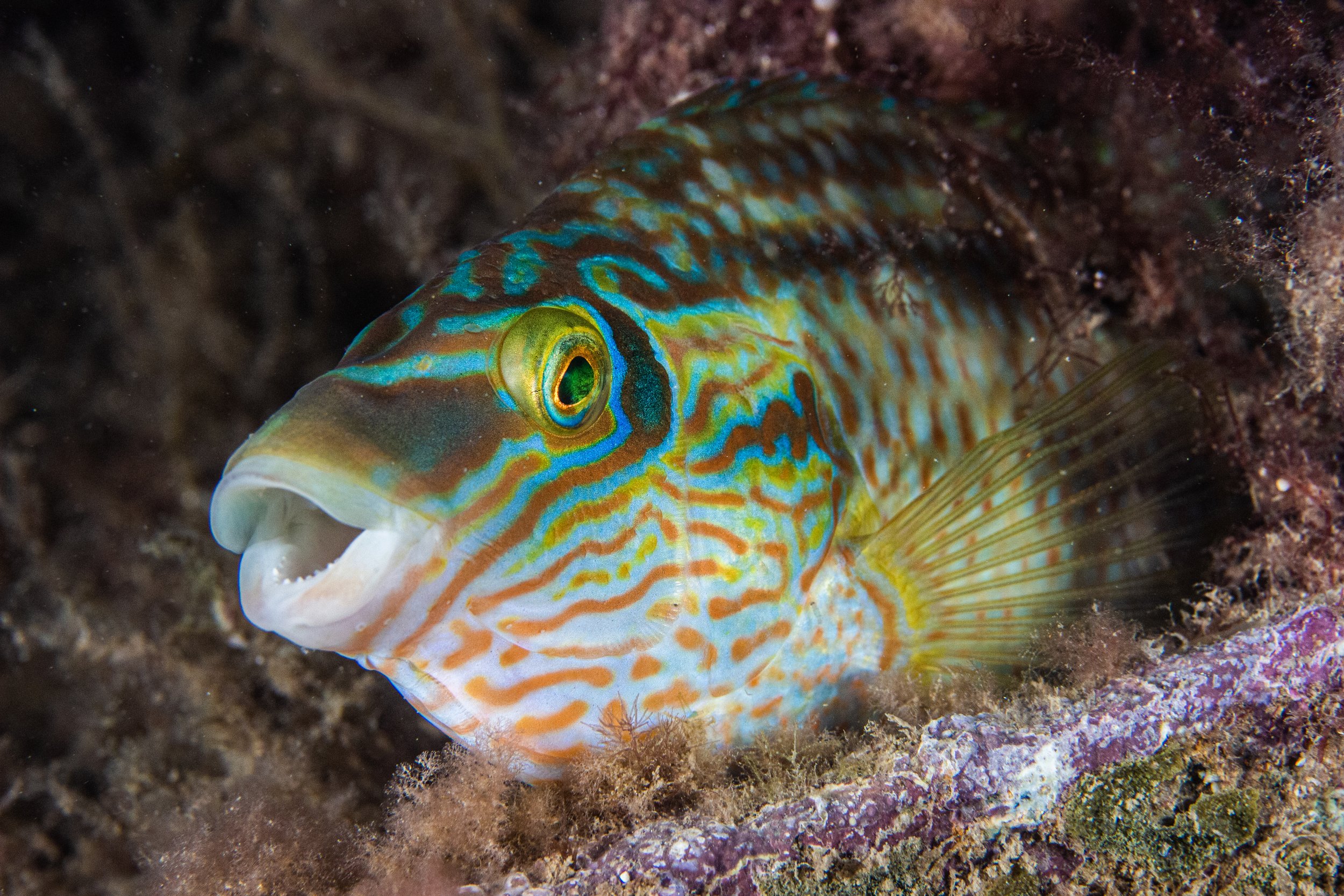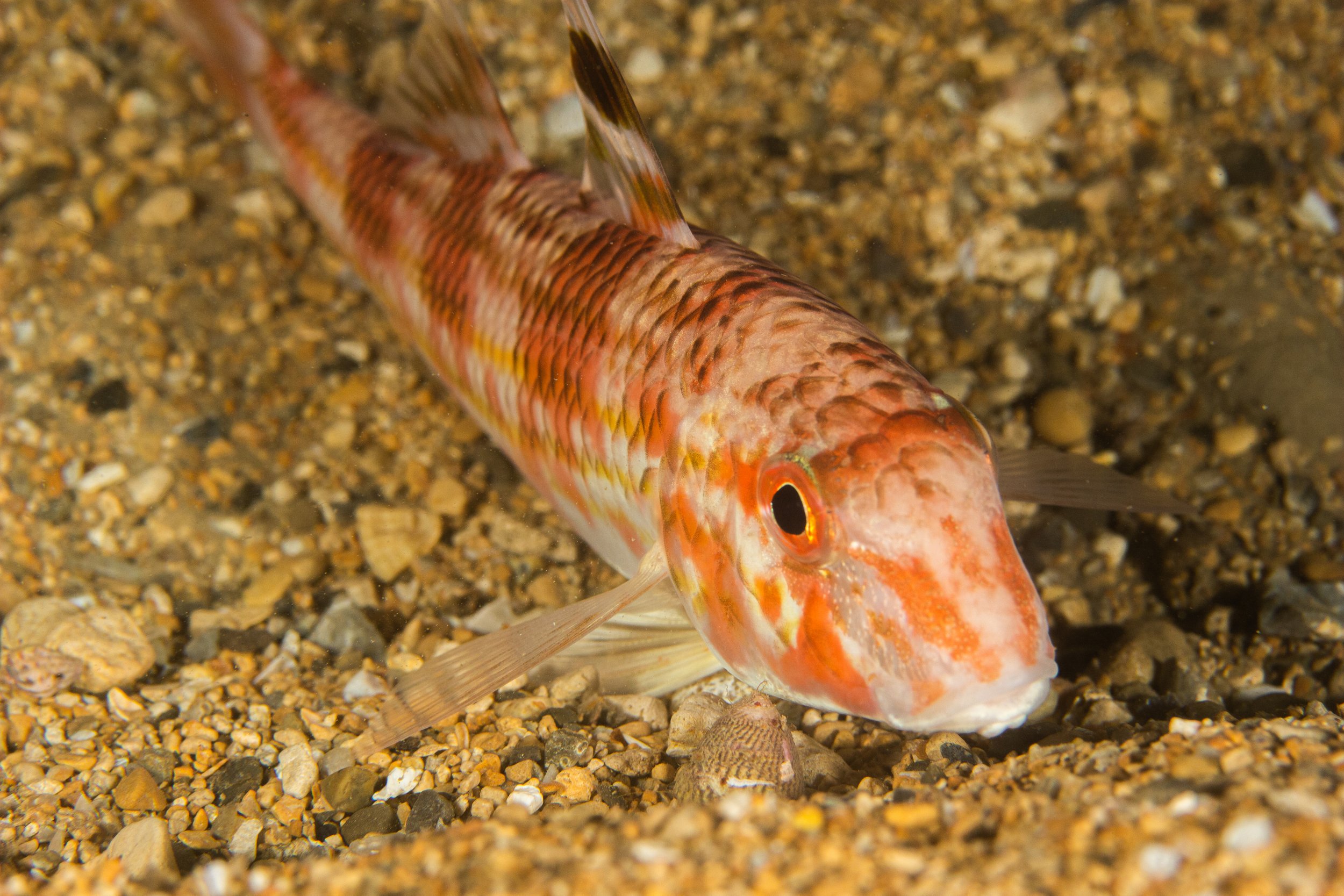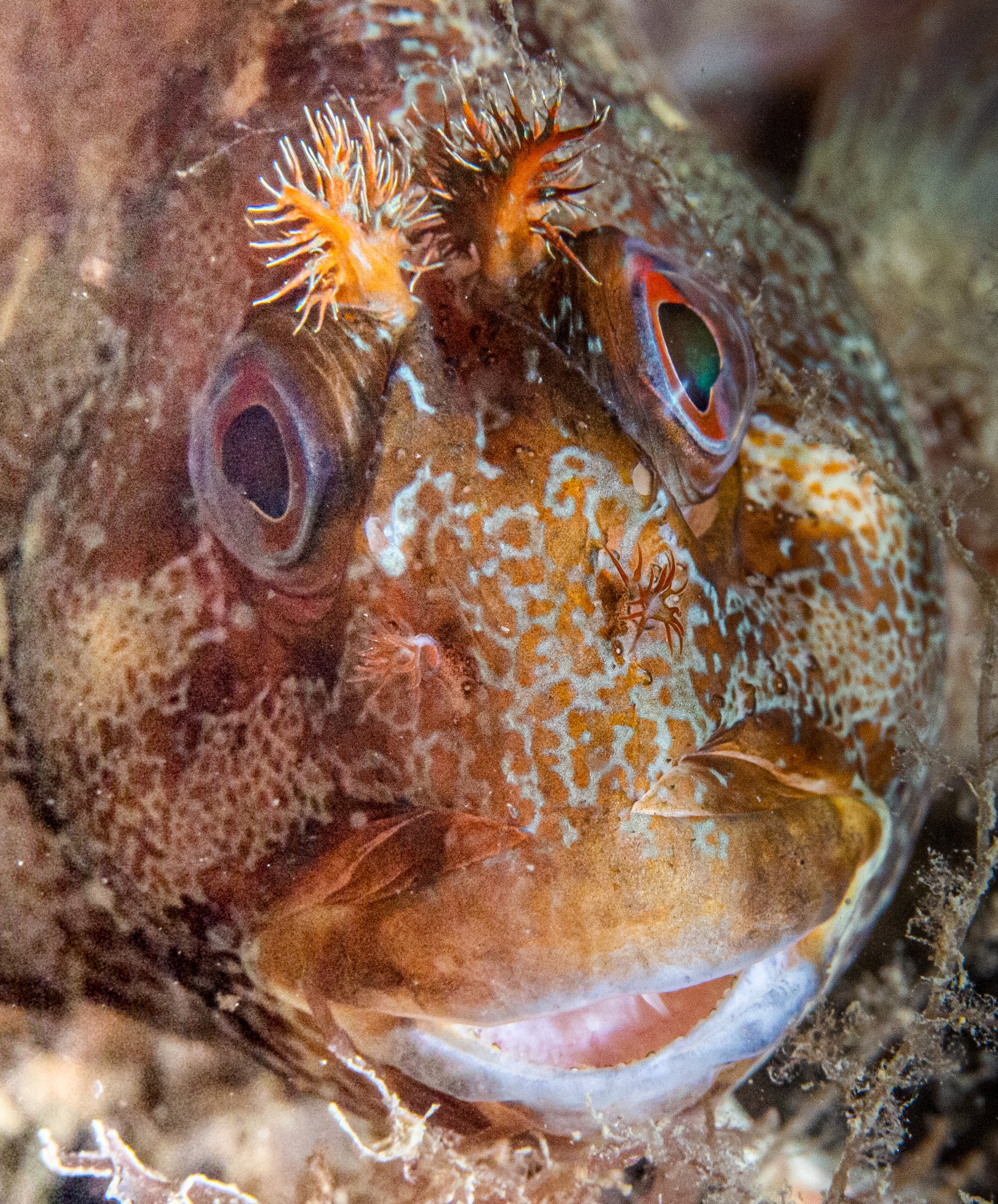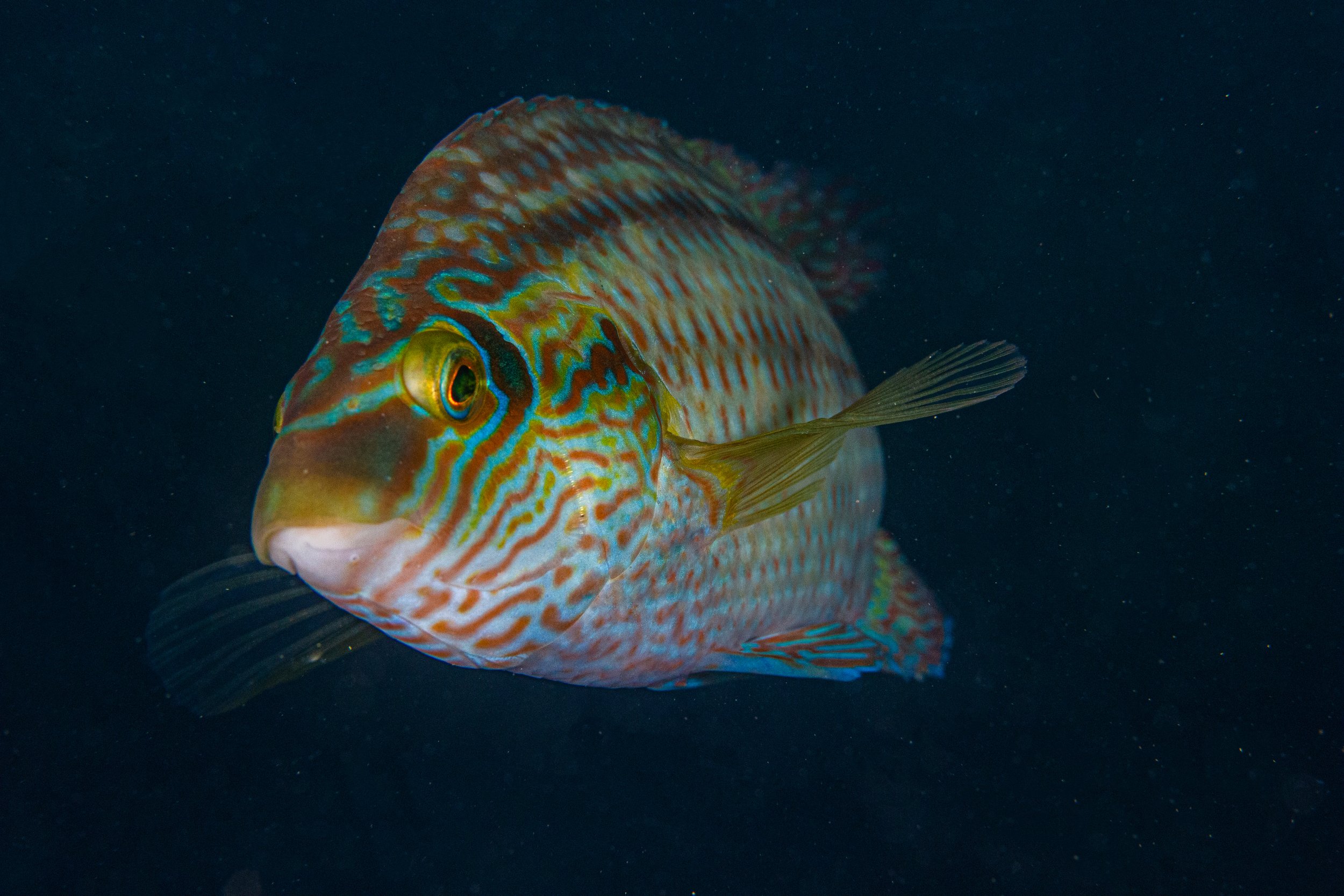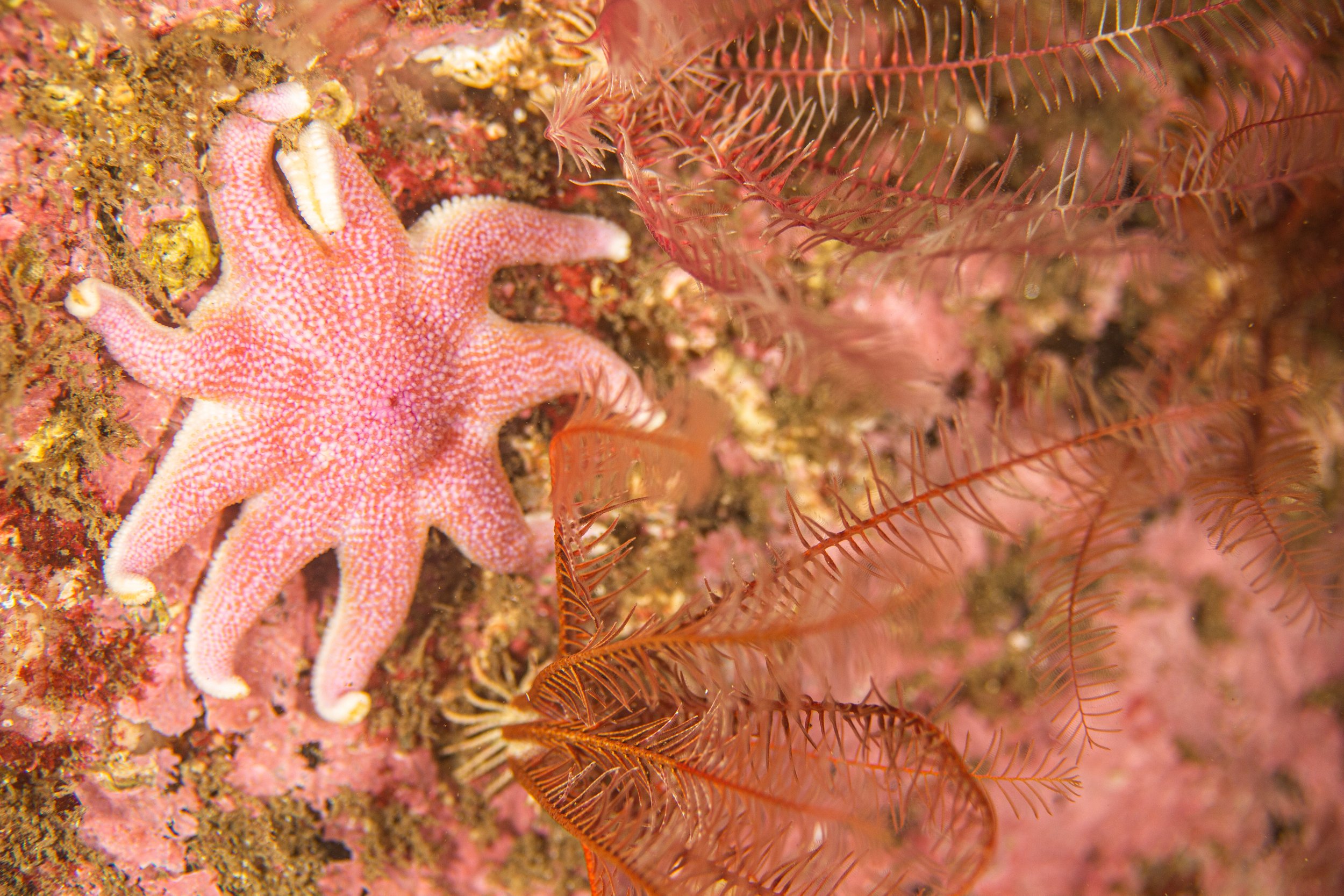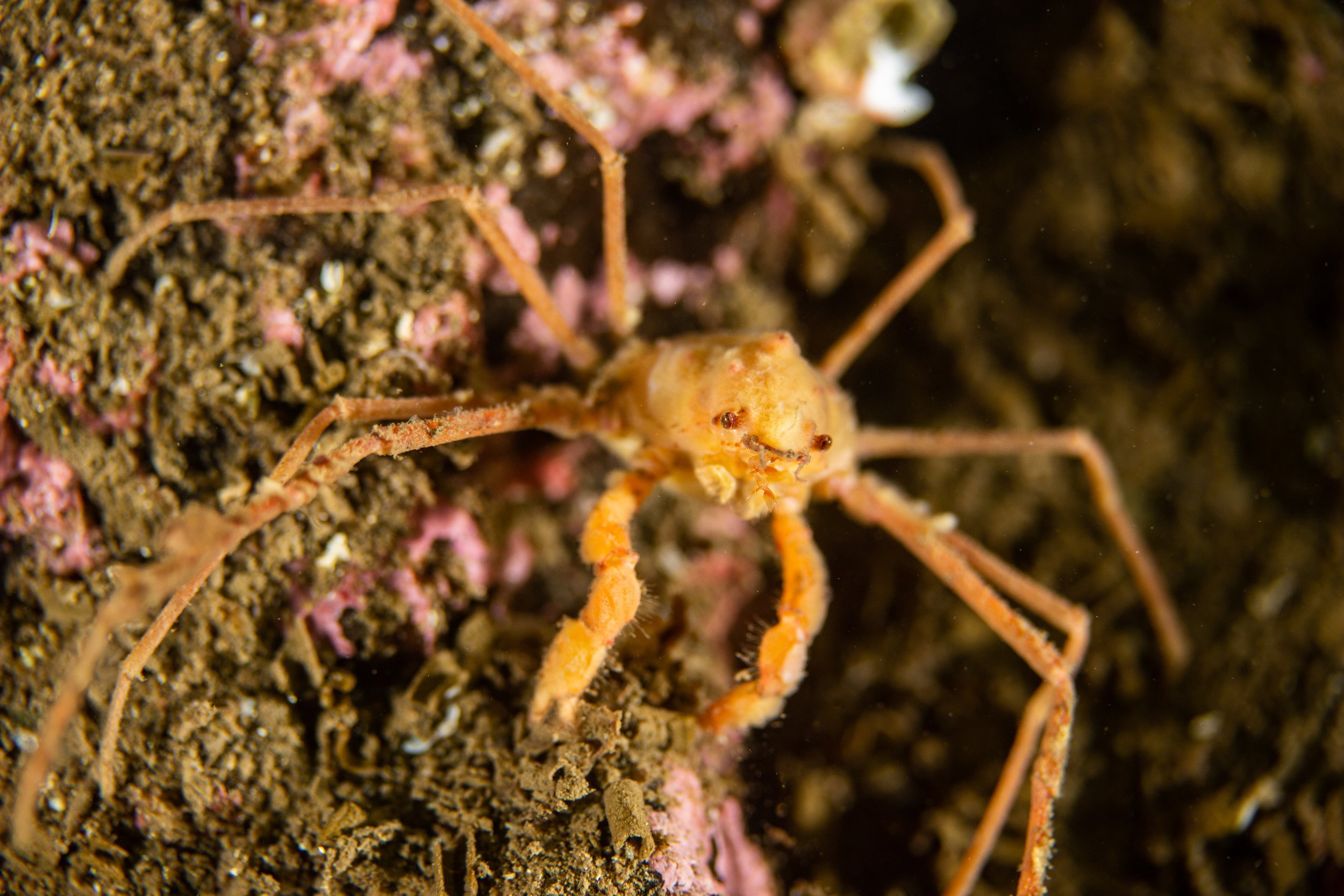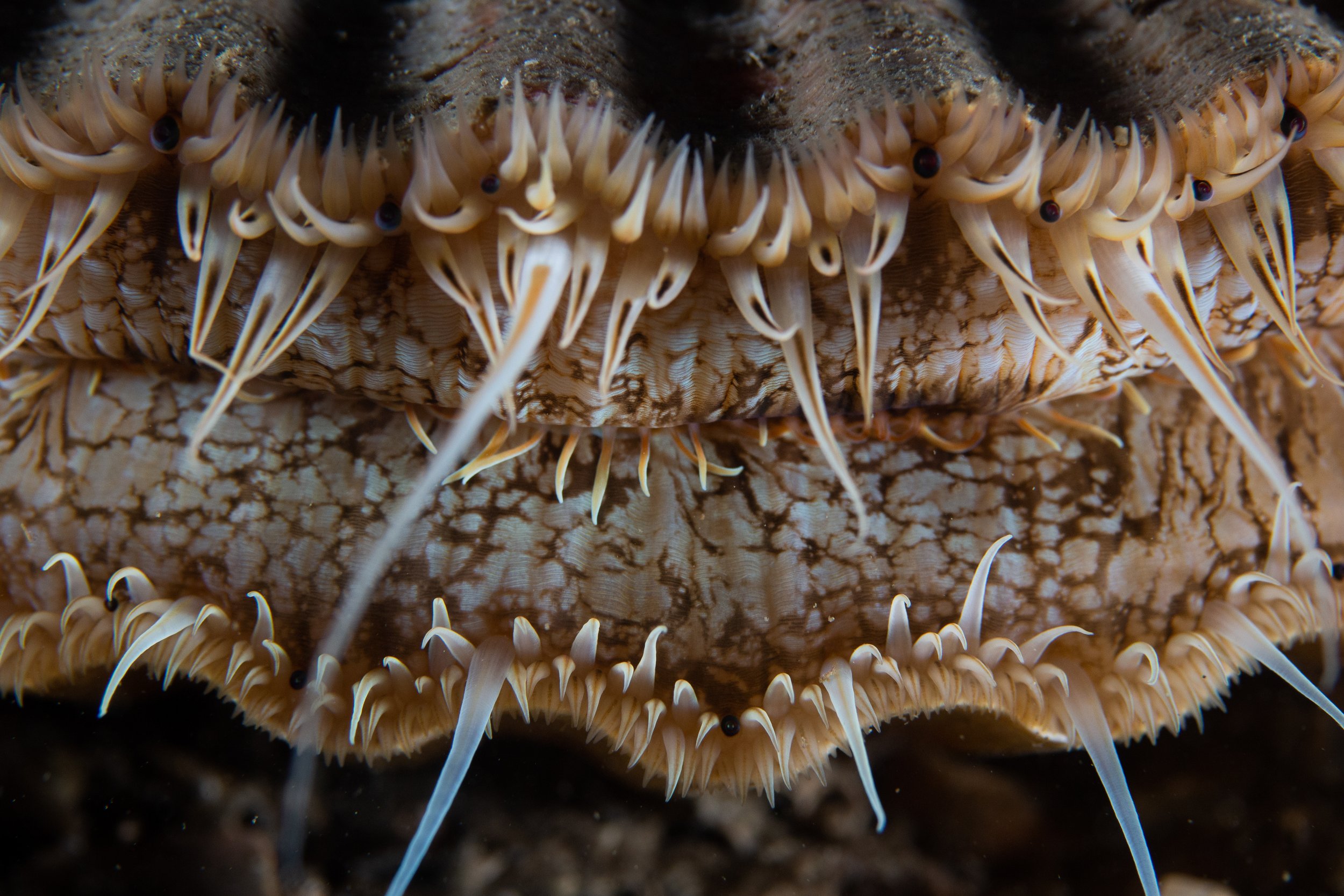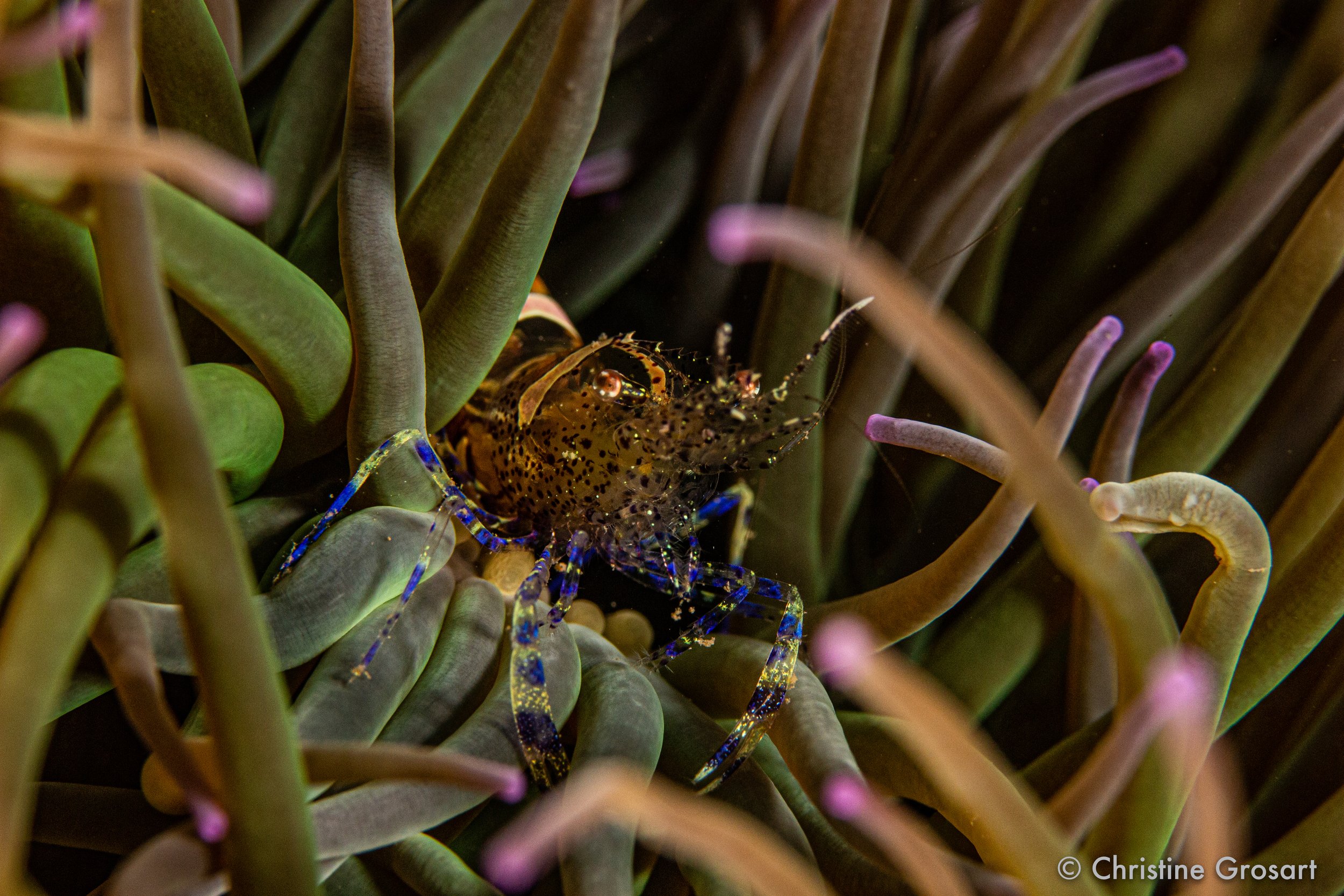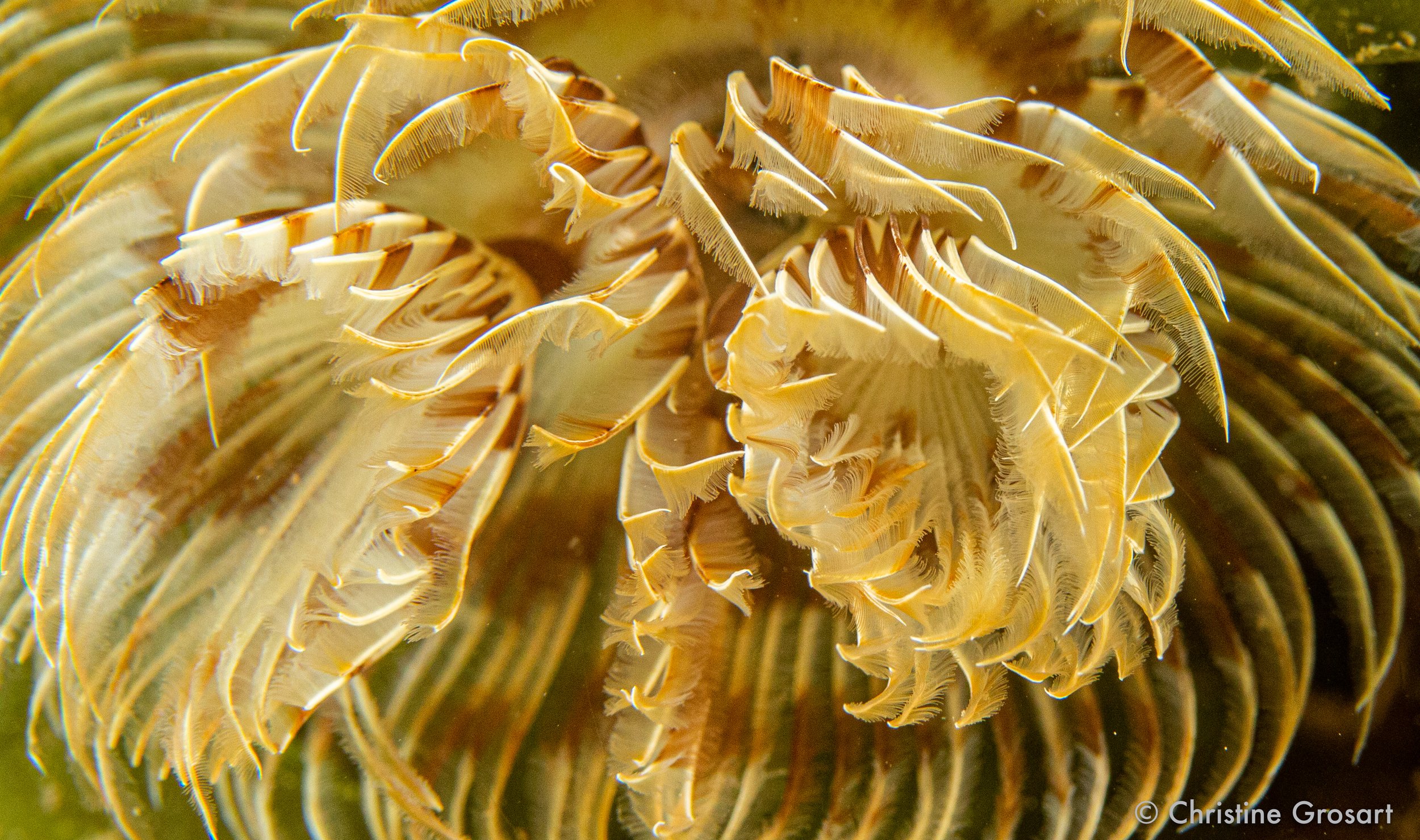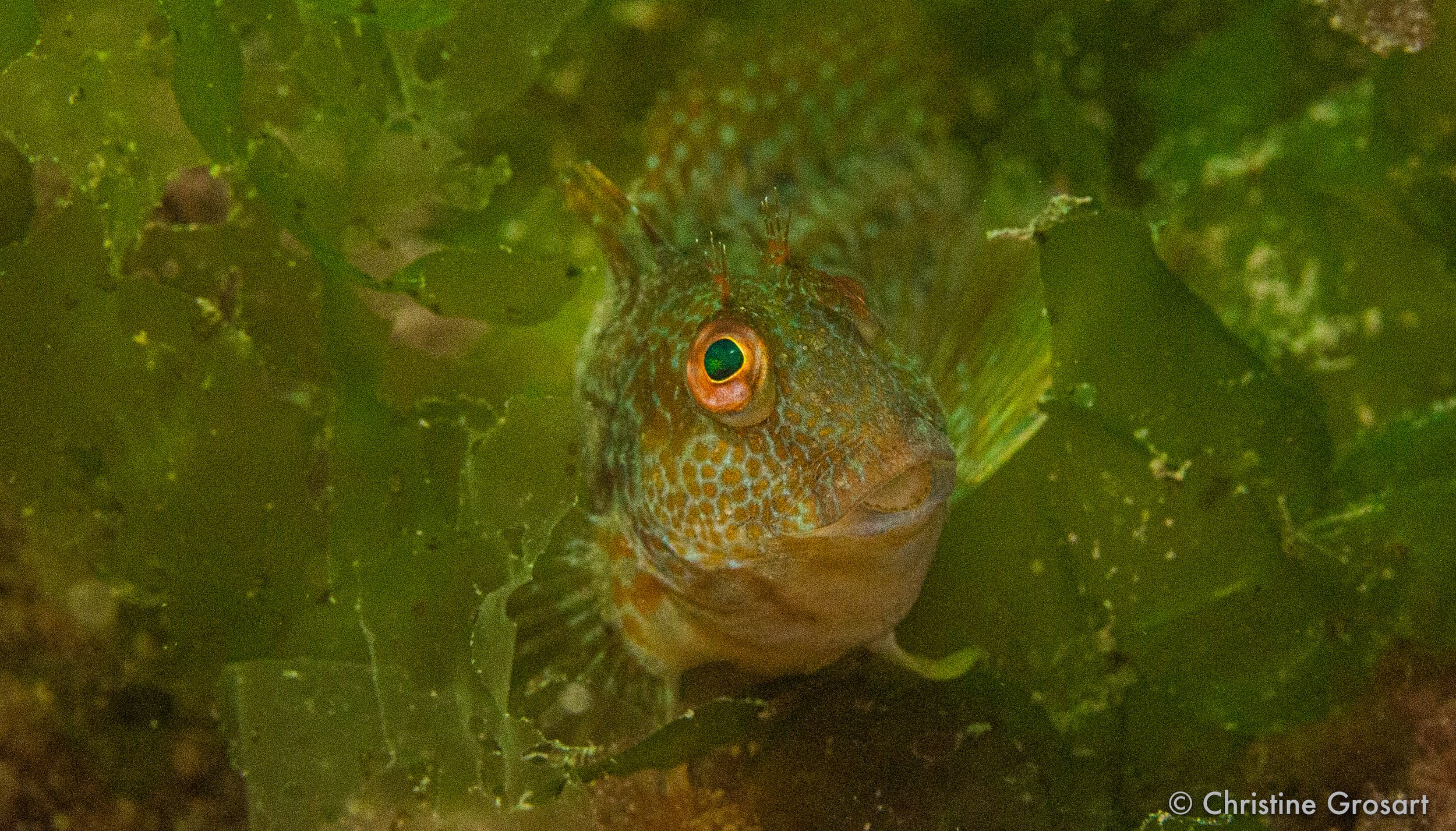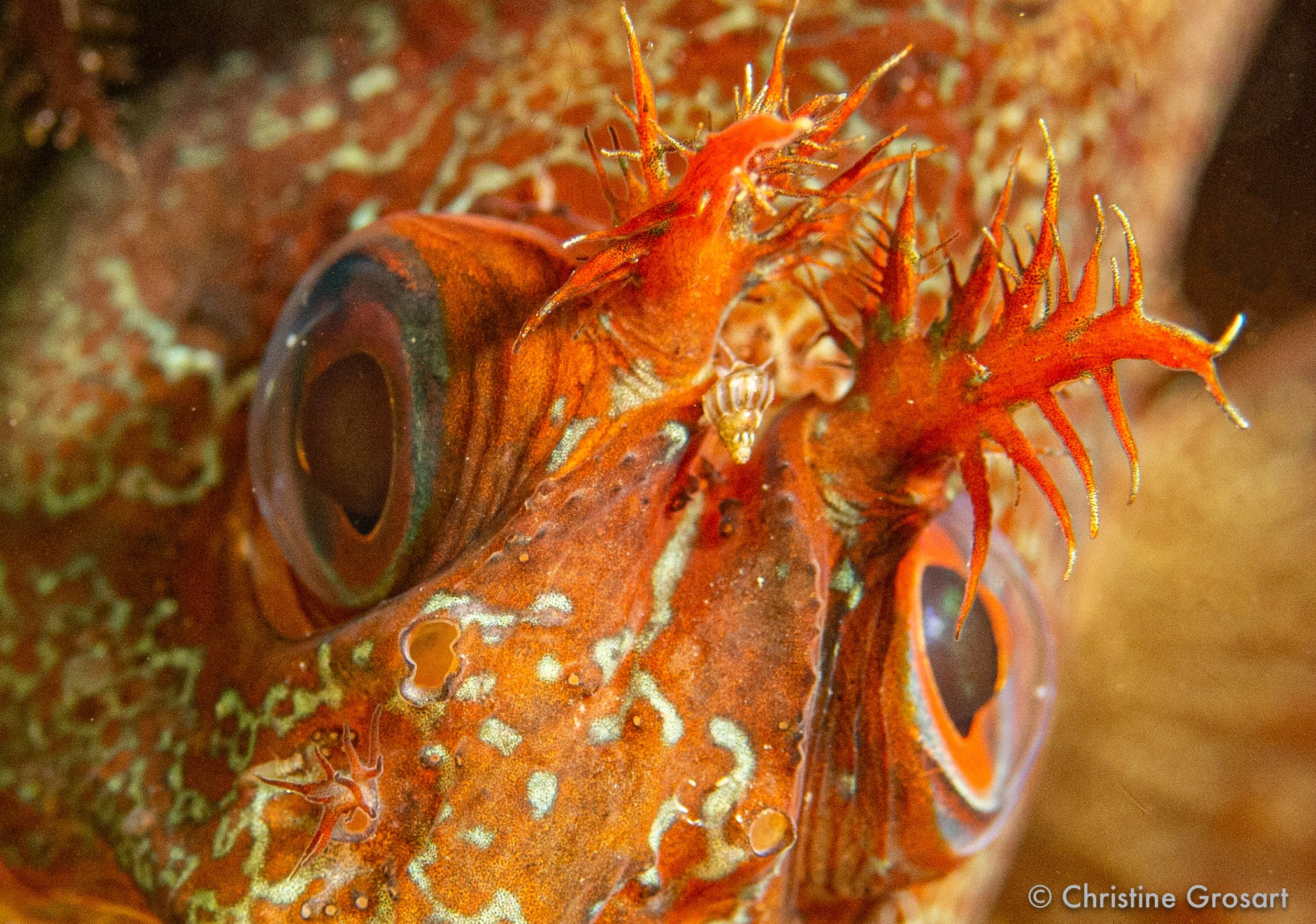Lessons Learned
“Live as if you were to die tomorrow. Learn as if you were to live forever.”
Mahatma Gandhi
The author (Christine) patiently observes a trainee conductong a valve drill. Mentors and examiners need to ensure their own solid skills before educating others.
I enjoy organising things.
Especially when others don’t want to, or do less of a good job than I can. Perhaps I should have been an events planner in another life. I love stepping back and watching my plan come together and other people benefitting from the fruits of my labour, whether that be a damn good social, a networking event, a fundraiser or an educational weekend. The latter is what I’m talking about here.
When I joined the CDG some 20 years ago, I heard mutterings about ‘training camps’. These mythical training events had, at the time, gone the same way as the annual AGM dinner for a while… whether through lack of enthusiasm, willingness or know-how to put the work in to run them, they had dwindled to almost nothing.
I decided to pull something out of the ashes and took it upon myself to throw an epic bash when it came to my CDG section’s turn to run the AGM and dinner. After this success, I decided to try my hand at running training events and from around 2008, began setting a standard of sorts for AGMs and training camps, which have now become an annual event, rotating around sections and many agree, extremely beneficial to all those who attend.
As far back as 2009 we were practising underwater stretchers at an event in Derbyshire which I organised in conjunction with Derbyshire Cave Rescue. At the time the concept of moving a diver underwater on a stretcher, using a full-face mask, was snubbed and rubbished by other divers in the group and deemed unlikely to be of any use. Apparently, we were wasting our time.
How things change.
Remember Thailand?
It is not enough to put on food, booze and arrange a date and time. These events are rare and getting CDG members together in one place at one time is very much like herding cats. Once you’ve got them, you have to make the most of every moment.
Make a plan.
Then make a Plan B when things conspire to ruin your original plan.
Get friends on your side. Involve other people, even if you don’t necessarily see eye to eye, but if you have the same common goal and the same genuine desire to keep trainee cave divers alive and out of trouble, then differences need to be put to one side and the job in hand takes priority.
Such an event was arranged in February this year (2025) by the Derbyshire section. The lessons to be learned from these training events are not just the diving skills and diving related theory for the trainees. But also for the organisers, mentors and examiners. If we do not continue learning, then these events lose momentum and it’s not hard for a year to zoom by without one. We need to be passing the baton onto our newer qualified divers to have the confidence and the knowledge to keep aloft of delivering quality training. Articles like this one, which I wrote and is published in the CDG newsletter in the third person, go a long way to helping with this and critical analysis should make sure we simply get better at it each time.
Once word got out about our training weekend, a few members of other sections asked if they could join in. I would never turn a cave diver away from a training event, so we welcomed them.
A new trainee gets to grips with thicker line used in British caves. Image: Christine Grosart
When, where, why and who.
The Derbyshire Section of the CDG hosted a training event in the North, over the weekend of 21-23 February 2025.
Section secretary Jack, set about organising logistics and the base was the Bradford Pothole Club and Capernwray Dive centre in Lancashire.
The reasons for the event were twofold: The Derbyshire Section had received a flurry of interest from four prospective trainees. They had already attended a Derbyshire section meeting, so the next step was to arrange some diving with section Qualified divers and examiners.
The CDG does not have a structured programme as such or guidance for coaching mentors in how to deliver training, both above and underwater. Mentoring and delivering training does not come naturally to everybody, yet there is an expectation of qualified divers to do it. So, the section is actively working towards giving this area attention.
The weekend was an opportunity to tackle both challenges under the guidance of examiners, training officers and experienced mentors.
Productive dive training has a simple format:
- Theory – why we do what we do, and how.
- Dry land drills. These begin with demonstrations, usually worked through in slow time, by the mentor, then handed to the trainee for as many attempts as they wish to master the skill before taking it underwater. Dry land drills offer the opportunity to ask questions, clear up misunderstandings and hone muscle memory of the skill. Dry land drills can be used to test capacity by adding blindfolds and using diving gloves.
- In water consolidation. The mentor gives a demonstration of the skill in water with the trainee observing, before tackling the skill themselves. The skill itself by now should be a formality and the emphasis on the capacity of the trainee to conduct it while maintaining control in the water (buoyancy, trim and positioning) and without disturbing the visibility where possible.
On the Friday evening, divers arrived ready for the first theory lecture of the weekend.
New trainees put through their gas calculations paces by qualified divers
Challenges
Prior to the event, the Derbyshire Section Training Officer laid out a plan for the weekend to achieve the above objectives, subject to alteration depending on QD/Trainee ratios and arrival times on the Friday.
Unfortunately, due to family issues, he was unable to attend the Friday evening session. I continued as planned to conduct the theory and dry land drill session on teaching and conducting a valve drill, with a view to progressing onto gas failure management. Running Friday sessions is clunky as often people will need to travel after work and traffic issues can cause delays. It is best to set a time and stick to it and begin the session with the majority in attendance, rather than delay it for late arrivals and curtail the session. In the end, everyone made the start of the session within 10 minutes.
The water in Capernwray was 5 degrees, so dives were well briefed, and equipment checks done as much as possible on the surface to maximise in-water time which was sensibly kept to 30 minutes.
Surface briefs. Keep them short, concise and to the point - especially in freezing conditions!
What we did
The valve drill is a skill that was demonstrated first using cylinders with regulators on, then each prospective trainee was given the opportunity to try it themselves. The value of the drill is to get divers new to sidemount, used to operating valves, breathing a regulator line down to empty, switching regulators, then re-opening the valve and conducting a flow check to reinstate a fully open status of the cylinders.
This drill can then be introduced underwater and the diver’s capacity increased incrementally by paying attention to neutral buoyancy, trim, staying in one place, remaining in contact with the line and blindfolded.
I then covered simple gas laws, such as Boyles Law, Daltons Law and Henry’s law. The group showed good prior knowledge of these, and we had a great starting point for the weekend ahead.
Further to this session, I showed some carefully selected video clips, to open discussion on the value of control in the water column and with some key points delivered, especially for mentors, on how to identify and rectify problems with the diver’s balance, buoyancy and comfort. This is imperative to master first, before dealing with emergency scenarios and line work in an overhead environment.
Ahead of the first day’s diving on the Saturday morning, the group received notice that the DS training officer would no longer be able to make the weekend at all.
As NS training officer and DS examiner, Ben and myself stepped up to make an adjusted plan for the days diving. The original plan had been that both DS examiners would get to dive with the prospective trainees. Now, only I was available, the plan was altered to maximise efficiency as much as possible. This was supported by DS qualified divers who stepped up to take on supervisory roles.
Following the first dive, feedback was given that was very positive and the divers were deemed good enough to begin some cave diving skills underwater. Ben used the lunch break to conduct a dry land drill for lost line searches and broken lines, which gave the re-shuffled teams an opportunity to begin some cave diving safety skills.
Skills and drills are consolidated on the surface before heading underwater.
Each team had an underwater camera and video feedback was given during the evening, which is particularly valuable when divers are blindfolded during a drill.
In the evening, supper was prepared by the prospective trainees and a large group settled in for an evening lecture by Ben on basic gas management. This included the use and limitations of the thirds rule, group worked examples on gas calculations with uneven starting pressures and different cylinder sizes. This was rounded up with a brief on the Temperature/Pressure phenomenon.
Sunday morning began with a dry land drill, teaching the basics of line laying from Ben. Rob (QD) took a more experienced trainee cave diving and everyone else made their way to Capernwray for day 2.
I had the opportunity to dive with a 3rd prospective trainee and in doing so, the objective of an examiner being able to assess the potential new trainees in open water had almost been achieved.
Other QDs set about mixing and matching divers and conducting lost line and line laying lessons underwater with video feedback. The weather conditions deteriorated alarmingly with extremely high winds causing waves on the quarry lake and making surface conditions worse than underwater.
Divers remained sensible and were concise about the underwater work and ensured they warmed up properly in between dives. Cold divers do not learn!
The occasional guest from other sections showed up to join in as well. Water temp: 6 degrees. Image: Christine Grosart, Canon R100 & Ikelite housing.
Lessons learned – (relates to running the event, not the actual lessons!)
1. Have a plan B. If key personnel are suddenly unable to attend, the event still needs to go ahead, and I am eternally grateful to Ben for stepping in seamlessly to assist and make the weekend flow as if nothing had happened.
2. Set up your classroom and bring it with you. The requested projector did not materialise and so we got lucky on the Friday, that the BPC happened to have one - and a screen. Their whiteboard also came in handy. To avoid lucky escapes in future, we will be purchasing a bunch of section teaching tools that can be easily transported or even posted around the country for training events. As one QD quite rightly said, we need to invest in our trainees. A load of people squished round a laptop is not great for learning.
3. Don’t assume new divers will be prepared for British diving conditions. One diver turned up with an inadequate undersuit for the water temperature and as a result, lost one dive. Also, don’t assume everyone has dived sidemount before. By doing some homework and meeting the prospective trainees first, we were prepared and had a full set of equipment to loan to a diver to get them started in sidemount.
4. Not everyone is born to teach. Some need assistance in their own lesson delivery skills, which is always an ongoing life lesson and to deliver lessons underwater and keep a trainee safe, it is imperative that you have solid diving skills yourself.
Do not involve line work until the basic foundation of diving skills has been consolidated. Divers cannot add value to underwater mentoring if their own basic skills require attention.
5. Delivering theory and dry land practical sessions also requires planning and the educator needs to put time and work into preparing the lesson, especially if it has been some time since they conducted it. I fell foul of this myself when I automatically defaulted back to a different muscle memory during a drill demonstration. I had not prepared enough and did not think I would be alone in delivering the lesson.
The late and great Dr Oliver ‘Cromwell’ Lloyd, who also had a passion for education. Image: Unknown, taken circa 1983 at Wookey Hole.
6. Communication is king. CDG divers typically dive solo and rarely pay any attention to underwater communication. When they do, it is commonly confused and misunderstood. Even in clear, open water and daylight, this was very apparent. To teach and train, communication is essential, and it is really not very difficult to have a 5-minute discussion beforehand with a trainee, on what signals you are likely to use for the session and what they mean. Do a practise run in the car park to ensure that signals are understood. If you find this difficult, pre-write clearly on some wetnotes some instructions and feedback that you can point to. Things like ‘Repeat the skill’, ‘Watch me’ and ‘Now you do it’ are common and easy to articulate underwater. One trainee commenced a valve drill underwater when I asked for a flow check. I didn’t stop him and quickly adapted, letting him complete it. It wasn’t fair to stop him because I had not explained the signals properly and ensured they were understood prior to the dive. There was no point telling him he did the wrong drill, because it was my fault.
7. Give clear and concise feedback in short, manageable chunks. On surfacing from the dive, give a few positive points of feedback first then let them know the areas you will be covering later for improvement – then get out of the water. Cover the finer learning points in detail in the warm and in front of the video, if you have it.
Never say ‘So, how do you think that went?!” It is unhelpful and offers no value. Critical feedback is often hard to take, especially when you have been trying your hardest and don’t know what you don’t know. Conscientious trainees will beat themselves up before you do, so ensure they have some positive encouragement, no matter how hard it may be to find!
Learning to teach can be taught. There are various options for those wanting to improve their techniques, but one that comes highly recommended is: Level 3 Award in Education and Training, which costs around £200. It may be possible to ask your employer to enrol you if your job is aligned…you never know.
The biggest difference and shift in the training during this weekend was the focus on not only the trainees, but the mentors and this is something we would like to continue and improve on.
We requested feedback after the event from the attendees and this is what some of them had to say:
Evening time was well utilised, with a workshop in packing and hauling cylinders in caves, using the vertical cave training facilities atthe Bradford Pothole Club.
F: "The weekend has been fantastic. The mixture of practical scenarios and theory was well balanced. The opportunity to receive immediate feedback following a practical has been great and aided in development.
On Sunday, I was given the chance to experience my first sump dive in a suitable venue. Being able to experience the dive planning, gas calculations, kit selection and the dive itself has been amazing."
S: “The only piece of constructive feedback I have may be quickly resolved once I start actually diving in caves...
The out of water line laying was very useful but knowing what a good or bad belay is in the water wasn't immediately obvious to me.
My supervisors corrected my bad belays or re-laid some line for me in the water, but a few pictures would help me understand what 'good' and 'bad' ones look like in a representative setting. It was obvious once I saw the corrections. I just need to get my eye in...”
M: “As a prospective member, apart from the skills learning and social element, the real positive from my point of view was putting faces to names.
In this case, in the literal sense of getting to know members of the CDG (Derbyshire section in particular) but also in a more general sense. Coming from a diving background, I have long been aware of the CDG, read articles on the website and heard stories.
Despite never having dived a sump, I came to the weekend with some sense of what might be involved, the critical self-reliance, the mentoring model, how CDG approaches diving in UK sump conditions, something of the mindset and the variety of solutions members adopt to overcome common challenges.
To see this first hand, to get involved with members of the section and to even practice key skills in the open water has been really informative. It has confirmed some of what I expected, demystified parts and corrected others. Overall, it has made the prospect of sump diving through the CDG a more tangible, real prospect whilst also provoking thought on how to evaluate, weigh up and mitigate the very serious inherent risks involved.
Overall, it was an excellent weekend and hopefully the CDG will continue holding these for all levels of members involved.”
G (QD): “While it was originally planned to be an event for prospective new DS members, in the end we had prospective members and trainee divers from 3 Sections of the CDG. Christine Grosart (Derbyshire Section Examiner) and Ben Wright (Northern Section Training Officer) both provided excellent evening talks on the Friday & Saturday evenings at the Bradford Pothole Club.
Both days of the practical training sessions were held at Capernwray. On dry land Ben provided an excellent tutorial on search reel techniques. Then QD’s and trainees were split into teams for the underwater training exercises; valve drills, buoyancy, line laying, line following and other practical drills.
I especially benefited from Christine’s advice on buoyancy techniques that have somewhat eluded me for so many years! I feel I remain a lost cause on that topic. (We can work with it – Chris)
All in all, it was an excellent weekend. A special thank you goes to Jack Dewison for organising the weekend and spending much of his time herding the CDG cats.”
New trainee getting to grips with bigger reels and thicker line. Image: Christine Grosart
C: “I spent the weekend at the CDG training weekend. The weekend involved a mix of learning, freezing and a lot of good company.
Each hour of the day was made use of, with evenings spent discussing dive skills and dive goals. Topics were discussed at length, including everything from gas planning to problem solving.
The days were spent in the water at Capernwray where we experienced a whole years’ worth of seasons in a weekend. Saturday, beautiful sunshine and Sunday, torrential rain and 45mph wind. But once under the water it was all the same and all about the drills, each tailored to use in a UK cave. Shutdowns, valve drills, and laying the thickest line I had ever seen.
The weekend was a blast, but the best part was the people. Everyone was welcoming, supportive and up for a laugh. I had once heard that a cave diver sits on a chair with their ego on a shelf behind them, but this weekend couldn't have been further from it. Just nice talks over a shared passion.”
“Tell me and I forget, teach me and I may remember, involve me and I learn.”
Benjamin Franklin
The author
2024 Mash Up
2024 left me gobsmacked. So many things I’ve always wanted to do, a bucket list of joy and so devastatingly interrupted by the passing of my Uncle Phil. I needed sport more than ever to keep me going.
Sitting around doing nothing is not a good way to recover from loss.
Not for me, anyway.
I trained in #lanzarote and #mallorca , climbed #sacalobra (again) completed my first #ironman 70.3 in Venice (when sick!) raced #annecy #triathlon olympic distance, went paragliding over #lakeannecy climbed #alpedhuez for real, learned to fly a drone @djiglobal sea kayaked the length of #menorca camping on sandy beaches with just the best people @muchbetteradventures raced Weymouth 10k, circumnavigated #portland by kayak with @channeleventsuk and saw a dolphin, learned to roll my kayak (work in progress) Dived with #lundy seals and bought some shares in racehorses!! I don’t think I’ve been caving or cave diving once, but there is more to life and I’ll get back to it when the mood takes me.
People keep trying to get me to slow down. Why would you do that? I like my life how it is. Why would I want to slow down? Life is too short, so make the best of it now. It’s not a dress rehearsal....
Lundy
Arrival on Lundy Island
I live only a few hours’ drive from the North Devon coast. It is shameful therefore that in my 20 or so years of diving, I had never visited the island of Lundy.
But perhaps not that shameful.
Lundy is a small island, only 3 miles long, that sits 10 nautical miles off the North Devon coast. Day trippers sail on the regular ferry MS Oldenburg from Ilfracombe to visit the protected and preserved island, which is home to puffins and seals, one campsite, a pub and 3 lighthouses.
Lundy is protected under a Marine Conservation Zone designation as well as a Marine protected area and the reefs surrounding the island are a strict ‘no take’ zone. This has allowed the underwater flora and fauna to flourish.
Dive boat for the weekend
Situated where the Atlantic meets the Bristol Channel, big seas meet a large tidal range and consequently, boat rides to Lundy can be ‘bracing’.
It is for this reason every trip I have ever attempted has been ‘blown out’. There just wasn’t a safe weather window for the dive boat to transit.
So, after a Facebook message from a diving friend, making an attempt at a trip in August – seal pup season – I thought I’d have another shot. As the date approached, the weather forecast deteriorated and I envisaged yet another failure at trying to get to Lundy Island.
It turned out that the Friday was a no-go. But Saturday and Sunday looked promising, if a little wild.
Whilst we would be too late for the puffins, it was optimal time for last year’s seal pups to come out to play.
On board with Kirsty Andrews, top drawer underwater photographer.
I drove down to Ilfracombe the evening before to stay with a friend, Caroline Bramwell, who has competed in Ironman distance races with a stoma. She also featured in Louise Minchin’s ‘Fearless’ and it was great to catch up with her and spend an evening overlooking the harbour, putting the world to rights.
The next morning the heavens opened. Sideways rain greeted us as we tried to get our cars as close to the boat as possible to unload diving cylinders, camping kit and tonnes of camera equipment.
Boat loaded and cars parked up for the weekend, among throngs of anorak clad tourists, we set off towards an island that we couldn’t even see.
Bone dry diving with my trusty Santi Elite drysuit
As soon as we left the harbour, we knew it would be a rough ride. The catamaran took off out of the water as we battled waves all the way out to the island and it only really settled after 90 minutes of not being able to stand up.
Divers hunkered down with looks of concentration on their faces as they tried not to throw up.
As we arrived, whilst still windy, the island looked wild, with blue skies and turquoise waters. We passed all the camping gear up onto the jetty and it was loaded into a landrover to be taken up the steep hill to the campsite, where we would be staying later.
Now it was time to dive.
Smiling for the camera. Image: Christine Grosart. Camera: Canon EOS 100D, Ikelite housing and strobes.
As the boat swung round and chugged into a sheltered bay, there they were. Waiting. You could almost see them tapping their watches; “Where have you been?”
The Lundy seals were in full chorus and at the sight of the dive boat, they flopped their way ungracefully off the sloping rocks and into the water to bob about, and wait.
We kitted up, cameras checked, buddy checks done and in our own leisurely time owing to no tides, we jumped off the boat and into the turquoise, clear, cool water.
Image: Christine Grosart. Camera: Canon EOS 100D, Ikelite housing and strobes.
“Don’t go looking for them….they will find you” was the instruction, along with general seal encounter etiquette.
“And if the come up and cuddle you….don’t cuddle them back!” Apparently, they can be covered in all sorts of bugs and nasties.
Seals are endangered and their behaviour suggests they know it. It wasn’t long before we caught glimpses of large, white and grey bodies flashing past as they sussed us out.
They are behind you - always behind you - as this is where they feel most on control. If you turn around to make eye contact, they vanish, quick as a flash.
Knowing this, I decided to experiment with my relatively new toy, an underwater housing for my Insta 360 camera.
My buddy Matt and I went through our pre dive checks and jumped into the inviting dark blue-green water.
My buddy, Matt
Dark round heads popped up and howling could be heard from the beach. You could almost see the seals tapping their watches and telling each other “The divers are here!”
We swam slowly towards the rocks, staying pretty shallow and fiddling with our cameras, getting the settings right, making sure the strobes were firing. I unravelled my selfie sick for the insta 360 and filmed a little bit of us swimming just to check it was all working. There was no sign of any seals just yet.
When I got back home and checked the footage, swinging the camera view around to look behind me, there were three seals quietly following us the whole time!
Image: Christine Grosart. Camera: Canon EOS 100D, Ikelite housing and strobes.
It wasn’t long before they started to get more inquisitive and flashes of large white and dark grey bodies shot past us. We milled about, not really sure what to do or where to go as we were now pretty much up against the rocks where the waves broke the shore below the tall cliffs towering above.
Then, it began.
Whilst I was looking the other way, a turned my head back and came face to face with a large, whiskery head. He was sniffing out my camera housing, able to see a reflection of his head in the port.
As soon as he’d been there, he was gone.
This game of cat and mouse continued for the next hour. I tend not to move much in the eater and can hang motionless without moving my fins at all. The seals seemed to love this as they could swim up behind me, grab my fins and hug them with theirs whilst having a good chew of the rubber, my ankles and my drysuit pocket!
Image: Christine Grosart. Camera: Canon EOS 100D, Ikelite housing and strobes.
While this was going on, my buddies would get the opportunity to get some great photos while the seal was falling in love with my fins.
The downside for me was that this was all going on behind me and I wasn’t getting much in the way of photos! I used my insta 360 on the stick to film the shenanigans going on but eventually I put it away and chanced my arm at some stills.
These depend entirely on the seals. It is a matter of patience, being in the right place at the right time, the seals mood and the settings on your camera being ready for the photo that presents itself.
Image: Christine Grosart. Camera: Canon EOS 100D, Ikelite housing and strobes.
Seals love admiring themselves in the dome port of your camera. In reality, they probably think it is another seal that looks just like them!
This presents great photo opportunities but also puts the fragile and easily scratched dome ports at risk – teeth and claws come out as they try to investigate. I didn’t want to spend my next few months polishing scratches out of acrylic, so I flicked them away when they got too ‘chewy’.
After a wonderful morning of playing with seals, we had a leisurely lunch and went on a dive around a reef pinnacle. I had the wrong lens for macro shots so mooched about a bit, trying to remember the names of the various squidge I was looking at from my Seasearch lessons.
We pulled into the pier and had some fun hauling cylinders up onto land. I think next time I’ll take my perfectly good caving rope and hauling system!
We opted to walk up to the campsite and we were treated to a stunning view as well as a puffy PFO test!
It was really quite windy and as beer time approached, there was some fun to be had putting up tents and blowing up air beds. I don’t know how I do it, but I always seem to end up on trips with people equally as bonkers as me!
The pub on Lundy fortuitously feeds the locals and those who work on the island, so despite being the only one and therefore a captive audience, the food was very good, the booze reasonably priced and the staff and service was excellent.
We made the best of it, interspersed with a very windy walk to watch the sunset from one of the lighthouses, before returning to the pub.
The next morning we all managed to grab a coffee and breakfast roll from the pub which was most welcome, before eating it on the walk back down to the boat.
Luckily the tide was in, which made loading the cylinders a bit less necky.
Off we went for seal round 2.
They were there again, waiting for us to sort out gear out. They seemed a little keener this time, already in the water with lots of howling going on.
Their heads bobbed patiently while we tested our cameras, did our pre dive checks and stepped into the water.
As we approached the rocks, the familiar tugs on our fins began.
I assumed the position and got mauled while Matt and Daryl this time, who wanted to hang out with us, got their cameras in position.
It wasn’t long before the seals started to get the upper hand. They had worked out that if they got really close, the divers didn’t know what to do and fell over backwards, rendering them completely helpless like a turtle on its back.
The mauling began.
Mugged by seals. Images: Matt Emmerson
One rolled me over and I lost balance, my double 12s twinset pulling me onto my back. Now, fins up and fully exposed, the seal took the opportunity to just get a mouthful of whatever he could. Camera, drysuit pockets, bit of hood, glove…
My buddies were insanely helpful, getting right in with their cameras to film this loss of fabulousness, whilst I completely failed to right myself for laughing and flooding my mask.
Daryl thought this was hysterical, until the seal turned its attention to him and, whilst on his back trying to get the classic Snell’s window seal silhouette, he instead got a good humping and was left abandoned in the weed!
The seals were definitely more boisterous and were having serious fun at our expense.
Image: Christine Grosart. Camera: Canon EOS 100D, Ikelite housing and strobes.
Being only a few metres deep and with tonnes of gas, we had all the time in the world – and it seemed to stand still.
It is an amazing privilege to be approached by wildlife who just want to play and interact with you. The seals are not fed by humans, they simply seek out play with their curiosity.
In the afternoon, we set off on another reef dive but in my hurry to swap lenses, I didn’t quite put the dome port on the housing properly and flooded my camera and lens.
This was pretty devastating and despite my insurance covering some of it, this worked out to be an expensive mistake.
Fortunately, a brilliant outfit called Nemo Photo who now deal in Ikelite and underwater camera gear in the UK, have been very helpful and I have a new camera set up coming very soon, treating myself to an upgrade.
I can’t wait to get it into the water!
The Lundy Gang
Ghosts of Kernow
St Michael’s Mount, Cornwall
I love Cornwall. Who doesn’t?!
With a huge fishing community and the Ghost Fishing UK treasurer now residing there, it was a no-brainer to run our annual Ghost Fishing UK project out of Falmouth.
We booked 3 different boats over 6 days and lined up some public outreach events to capture the hearts of the holiday makers.
We kicked off at the Cornish Seal Sanctuary It was apt, as the SeaLife Trust were keen to fund our project and they also owned the seal sanctuary.
I was fortunate to interview Maz, one of the animal care team and she was explicit about how ghost gear affected and even killed many of the animals brought to the sanctuary's attention.
Working closely with the British Divers Marine Life Rescue, a handful of seals and pups each year would arrive at the sanctuary with horrific wounds from ghost gear which would remain the same size, caught around a limb or neck, while the seal continued to grow, causing awful deep lacerations.
We dived every day and I took a few days off diving to organise a social event where we invited every conservation and wildlife outfit in Cornwall to meet us, dine and drink with us and to introduce ourselves properly.
We were very warmly welcomed and everybody who came were amazed at how much ghost gear we had retrieved in such a short space of time.
We held public outreach events on Marazion beach and Maenporth beach just down the road from our campsite.
I managed to get a super early morning radio interview and Sophie our media lady got is into the local press.
We had our eye on Louis Matisse Nichols, otherwise known as Mini Beach Cleaner.
Louis, 11, has been beach cleaning since he was two years old, and started his famous Instagram account @minibeachcleaner two years ago.
His pictures on Instagram depict the reality of the state of our beaches. Based in Newlyn, Cornwall, Louis and his family clean up litter on almost a daily basis.
Louis tries his hand at diving
At this time of year, with the school break, bank holidays, and summer weather, the beaches are being wrecked by thoughtless tourists and holidaymakers who buy bodyboards, balls, spades, and lots of food, and discard it all on the beach for someone else to deal with.
That is where Mini Beach Cleaner aka Louis comes in. Using his wonderful creativity, Louis creates collages from the vast amounts of rubbish he collects on Cornish beaches. Louis says he has “a list in [his] mind of what [he’s] going to create” and he takes inspiration from “the animals, and farms”.
Louis send up a lift bag
When he was younger, Louis said to his parents that he didn’t need to go to school any longer, because being a bin-man meant no need for qualifications.
“He is incredibly creative” says his mum Nadine, who helps him with his beach cleans and acts as camera operator for his Instagram account. with chairman of ocean clean-up charity Ghost Fishing UK, for a taster session in how to remove deadly and toxic ghost fishing gear from the ocean.
We were so impressed with young Louis that we decided to invite him to join us.
Meeting at Porthkerris Dive Centre, Louis met Rich Walker, Chair of Ghost Fishing UK, to have his first ever scuba diving lesson. As a highly experienced dive instructor, Rich taught Louis how to use the breathing apparatus, hand signals for underwater communication, and most importantly how GFUK survey retrieve ghost gear.
Of course, no Ghost Fishing dive is so easy. Soon after Louis was getting his wetnotes out and surveying the net. He was then shown how to use the inflation nozzle to inflate a bright pink Halcyon Lift Bag and raise the net to the surface.
Insanely shy and probably with no concept of what a difference he is making - and will doubtless continue to make - to the our oceans, Louis didn't quite know what to say or do with himself afterwards so we took him out on the boat to watch the real Ghost Fishing divers in action and we even got to see a pod of dolphins who came out for the occasion.
We are told he did not stop talking about it for weeks afterwards!
The team wrapped up the week having recovered 540 kilos of lost ghost gear and we are extremely grateful to the SeaLife Trust for their support.
Ghost Fishing UK divers clean up the Epsilon
Who is Betty G?
Paul Duckworth takes a sample of net
Wreck diving isn’t really my thing.
I do it for sure, but I would always much rather be in a cave.
Ghost Fishing UK had a report on a wreck out in Lyme bay in about 48 metres of water and the skipper of Scimitar had seen it come up on the sonar and had dropped in to have a look. There was not only a small wreck slightly tipped on its side, but a huge net adorning it, complete with buoys. It was not on the maps and had not been identified.
We made a plan to go and document it with the intention of removing the net the following day.
Once on the wreck, it wasn’t long before the team were able to rub away the brown crud to reveal the wreck’s name. Possibly the easiest identification of a wreck ever!
It was a small trawler that had fallen over with her nets out and sank. Everyone survived and we had a discussion about what to do next. We planned to report it to the receiver of wreck and the weather killed our plans to go back and recover the large trawl.
Plan B was formed and the Ghost Fishing UK team headed to a reported gill net which was lost and strung out in Portland harbour.
I was on the camera as usual and the net was well disguised in weed and was actively catching.
We documented a dead diving bird that had drowned in it, several spider crabs hopelessly tangled and at various stages of death, plus the classic image of ghost fishing – a fish that was stuck half way through it, dead.
We recovered the net, which was no easy task and the team excelled in the skills we had taught them. One diver got a piece of equipment caught up in the fine strands of net, despite being dressed in a streamlined manner. His teammate signalled him to stop immediately and sorted the problem.
The smell from the dead and dying animals made several of the team wretch as we pulled the net on board.
A camera guy from BBC Spotlight came on board to film proceedings and we also managed a radio interview too. It was great to get the message of the Ghost Fishing issue out there in such a short space of time and very satisfying to remove a net that had been causing so much harm.
Paul looks longingly at spidge.
Back in the swing
After 7 weeks at sea, you can imagine how desperately I wanted to see my diving gear!
I had been very much inspired while I was away by the south coast divers, taking their cameras on shore dives and coming back with amazing images of wonderful sea life around the UK coast.
I hadn’t dived since early March and lock down and work stopped play.
Finally at the end of July I was able to pack my Citreon Spacetourer, fill it with things I had bought from Amazon while I was away (neighbours thought Christmas was coming!) and built my single cylinder set-up which I hadn’t used in years.
I headed down to my favourite haunt Chesil Cove in Dorset and played it safe for my first overnight in my car, camping on my friend’s driveway!
My buddy was a regular at Chesil and I had never met him before, a lovely chap called Jon Bunker.
We kitted up at a social distance just after 10pm and headed into the darkness.
Darkness doesn’t bother me - after all, I’m a cave diver!
But there are bitey, stingy things in the sea and critters large and small tend to come ‘out’ at night!
We dropped under the waves into milky, awful visibility. Thankfully this cleared quickly as we headed deeper and we soon started unpacking the cameras.
Jon was quicker than me and spotted a dogfish which I completely failed to photograph, then a pipefish which went a bit better.
I soon started to get the hang of my Ikelite strobes and we started to see lots of cool stuff.
We came across a huge lobster who had caught a velvet swimming crab in his jaws.
He was extremely quick and very busy and didn’t care for us at all. Then the crab made a break for it and a fast chase began!
Cuttle fish. Image: Christine Grosart
Jon was only a few metres away and I could see his torch in the murk when to my utter horror - mixed with excitement - a massive few swimming conger eel passed right by me.
I watched it for a while…not sure to go and try and take a picture or run away.
I ran away and told Jon what I’d just seen before informing him I had chuffed quite a lot of gas in my terror and needed to leave!
I surfaced and lay on my back, paddling back to shore and watched the sparkling stars overhead.
I made my nest in my van with my new Rab Ascent 900 sleeping bag and had a quick flick through my images, chuffed with my first attempt at macro photography. It’s not as easy as it looks!
All images Copyright Christine Grosart. All rights reserved.
The monster net
“Oh Hello, this is the Guardian. Do you have a moment?”
I was only a few slurps into my morning coffee and my breakfast was about to go cold.
“Sure, how can I help?”
Volunteering for the charity Ghost Fishing UK always threatened to take over our lives and we can safely say it has done just that.
Chair Richard Walker, myself and third trustee and operations officer Fred Nunn, a long-standing friend of about 8 years, all work pretty much full time in addition to our real full time jobs to run this world leading charity.
We have the largest group of Ghost Fishing trained divers in the world, with 70 on our books and 120 on our waiting list. This is in addition to a large pool of surface volunteers who we can call on at any time for help.
It is an incredible achievement and now, as a completely independent charity we are free to do things our way - and the organisation has flourished.
When I first took a bunch of Bristol no.3 British Sub Aqua Club members on a group trip with my small business, WetWellies Caving - my first customers in fact when I started in 2012 - I had no idea it would lead to this!
Much of what we do is self-taught. The skillsets we have adopted over the 5 years of running Ghost Fishing UK have sent many of our brains bulging. Who knew we'd have to write KML files or navigate the .gov website minefields? Risk assessments, mission statements, method statements, articles, training courses, website...you name it!
Many of us are doing things we probably never would have done otherwise and it has been a true rollercoaster. Fred was terribly nervous in front of the camera - now he takes live BBC interviews in his stride.
Diver attaching lift bag to a net. Image: Christine Grosart
I had no press training but found myself having to learn the tough way and absorbing any education around the subject that I could.
This was one such occasion. I had written a press release using a template and some excellent educational materials from Class:PR and it went crazy!
After the Guardian, we started to see that a lot of news outlets were picking up our story.
Scuba divers from Plymouth had reported a very long, lost gill net on the popular and very beautiful Hand Deeps reef.
With a few reports and details in hand, we were pretty sure we could find it and deployed two Ghost Fishing UK teams onto the water. We were treated to a nice big hard boat, Seeker from In Deep Dive Centre and a professional crew who are totally on board with the charity.
One team located it and began surveying it.
Luckily, I was in that team so set about the net with my camera, documenting the trapped life in it.
The lost net at Hand Deeps. Photos: Christine Grosart/Ghost Fishing UK
Spider crabs, lobsters, fish and even urchins had got tangled up in the unforgiving gill net which had been fishing around the clock, indiscriminately.
Once surveyed, the team returned with knives, lift bags, stage bottles for lifting gas and a plan.
The net came free from the reef relatively easily and with no damage to the environment.
Once back on board the boat, the 2 hour ‘crab picking’ began.
Each trapped animal was documented according to species and whether it was dead or alive.
Luckily the sun was shining and the In Deep crew waited patiently as we dealt with each animal.
Over 100 animals were trapped in the net and around 80% were still alive and returned to the sea.
The net was measured at over 200 metres long (Fred is very keen on measuring and weighing things accurately) but its owner, not surprisingly, could not be found.
I put my new-found press release writing skills to the test and with a good story to tell, kept my fingers crossed.
BBC Spotlight did two great pieces on the story and we were then contacted by ITV and Channel 4, all keen to come out and film with us in the future.
Our social media lady, Dolly, also set about Instagram and Twitter and the levels of engagement were phenomenal.
It was a huge boost to the team after several months of being unable to dive, never mind head out on a mission and it was fantastic to get this net out of the sea so efficiently after a long time off.
Check out this fab news piece by the BBC!
Film about the project, created by Christine Grosart
Sea Doggos
Tag! You’re it!
There was a sharp tug on my fin and I turned around to catch the cheeky seal diving off into the distance, pretending it wasn’t him.
This never-ending game of ‘tag’ is a favourite of the seals in the Farne Islands, Northumberland.
Around August time they get quite playful. Global Underwater Explorers UK had a group trip going and on this rare occasion, Rich and I were both free.
I needed to keep my skills up with my rebreather so took it along with me, interested to see what the seals made of the bubbleless, silent machine.
After two days of boat diving, Rich took me on a shore dive from St Abbs. I had never dived here and seized the opportunity to do some SeaSearch recording, something that had completely transformed by sea diving.
The underwater scenery was simply stunning.
There were kelp forests and steep gulleys, adorned with fluffy dead men’s fingers and corals.
Nosey, territorial Ballan Wrasse pestered us and we dived through the most beautiful natural rock archway.
We had lunch in a café in the harbour and dive 2 was equally as stunning. British sea diving on a good day is as good as anywhere in Europe and I enjoyed filming with the new Paralenz Dive Camera.
Conger Conger
I've been trying to get to grips with some scientific names for various marine critters. They tend to be formed from genus, species and sometimes order and class.
The easiest one to remember is 'Conger Conger'. Not very imaginative and I guess, in a class of it's own.
This one in Lyme Regis, Dorset was in a cage of it's own.
It had got itself trapped in a large, lost fishing pot, doubtless looking for an easy meal. A spider crab cowered nervously in the corner and the eel was stuck fast through the netting, unable to go forward or back with no chance of escape.
The charity Ghost Fishing UK had been tipped off about two lost pots which had got their lines tangled up in an old diving shot line and subsequently snapped off, abandoning them on the seabed.
Now, both the shot line and the lost pots were threatening unwitting wildlife.
As part of a 5-day marathon effort by the charity and its volunteers, not aided by Covid-19 restrictions and ever changing legislation, a team of 6 divers set out from Lyme Regis to dive the Heroine. Consisting mainly of brick cargo and conger eels, this fairly flat wreck had snagged both a shot line and string of pots, the latter laying hopelessly on the seabed just next to the wreck.
I was on the camera again, using my new Canon 100D and Ikelite housing set up, with Ikelite strobes and snapped some shots of Andy Rath collecting up the old shot rope, made mostly from polyprop. Floating neutrally buoyant, it was a very real hazard for divers, cetaceans and boat propellers alike.
Once removed, the pots eluded us until the other team jumped in to join us. It wasn’t long before we found a large, lost cage just off the wreck and stuck fast, a resident conger eel.
The pots had been there an estimated week or so. The conger wasn’t in bad condition and his cellmate, a nervous spider crab, cowered in the corner, trying hard not to be his next lunch.
I got in close and set about the camera.
Scuba divers are the eyes of the ocean and without underwater images and video, the public remains completely unaware of what is going on beneath the waves. How can anyone care about something they cannot even see or simply just don’t know about?
Satisfied with my images, Fred gave me an OK question signal to which I replied ‘OK’ I was done.
I did not expect what happened next, as Fred immediately opened the lid of the cage!
I screamed through my regulator, climbed over Andy leaving him confused and dishevelled and hid well out of the way, expecting the conger to sense freedom and set about immediately biting me.
Of course, nothing of the sort happened. Fred spent the next 5 minutes trying everything he could to get the conger out of the cage.
He tipped it on its side, shook it about, cut away some of the net which the conger was ensnared in and even tried to remove it by its tail. He wouldn’t budge.
Eventually, after more persuasion the conger slipped slowly and unceremoniously out of the cage and swam nonchalantly off along the sand to head back to his lair in the piles of bricks.
The grateful spider crab also made a break for it at a significantly quicker pace and the team set about raising the pots to the surface.
The pots were returned to their owners in an attempt to work up relationships with the local fishing community. Without their trust, we will not be able to get information where fishing gear has been lost and won’t stand a hope of recovering it before it does untold, wasteful damage.
Going Bubbleless
Learning to cave is the beginning of a whole new adventure.
Where else can you take up a hobby which can lead to exploring parts of this planet where literally, nobody else has ever been? All the mountains have been mapped and most of the ocean floor has been documented.
But nobody knows what lies inside the Earth until somebody goes there.
Many cavers spend their spare time ‘digging’ to remove obstructions in caves such as sand or boulders to open up new cave passages, or even dig open new ones from the surface. I’m far too impatient for that! In order to discover places no human has ever been, I took up cave diving in 2004 and never looked back.
I had mostly used conventional SCUBA equipment, reconfigured for appropriate use in caves.
Following my 2017 exploration in a cave called Izvor Licanke in Croatia, the logistics of using this equipment became a limitation. The cave was deep and we only had enough gas and bottles for one dive on the expedition.
Chris learns her closed circuit rebreather in Egypt
So, I bought a machine called a Closed Circuit Rebreather. It meant learning to dive in a slightly different way and I figured the best way to learn was to get lots of time in the water.
My partner Richard and I headed out to Egypt last summer to take a little break and spend hours getting used to my new equipment. Hopefully, this new rebreather will open up many doors and allow me to explore Licanke even further to discover yet more places unknown to humans.
Image of a clown fish: Christine Grosart, 2017
Winner Winner Chicken Dinner!
Well…that’s what we used to say way back when I worked in horse racing!
But this time, I’m super happy that my image of a diver cutting away a Ghost net in Scapa Flow won an award.
Diver in Scapa Flow. Image: Christine Grosart
I headed down to Brixham with Paul Duckworth to promote Ghost Fishing UK and run a stand at the Brixham Marine Conservation day. We met some great people and I gave a talk on the project which went down really well. I was over the moon that my image of Colin Stratton and the Ghost net won the Underwater Conservation Photograph contest.
I came away with a Manfrotto camera bag and no less than four DSLR photography books.
Sunny Swanage
Tompot Blennie under Swanage Pier. Image: Christine Grosart
I woke early, still thrilled about the night dive the evening before.
The sea at Swanage was sparkling and there was loads of space to park up on the pier. People kept their social distance and I was able to kit up in peace, checking my camera over and over and hoping for a good hour or so to learn more about photographing critters.
I wasn’t disappointed!
Images: Christine Grosart. Canon EOS 100D, Ikelite housing and DS160/161 strobes, Macro lens.
At barely 2 metres depth it was like being in an aquarium!
Swanage pier was my first proper scuba dive in the ocean 18 years ago and now I was back, taking photos I could only ever have dreamed of.
Tompot blennies posed for photos, a corkwing wrasse obliged as well and was very friendly.
Tompot Blennie. Image: Christine Grosart
I’d forgotten just how enjoyable it is to throw on a single cylinder and jump into the sea right from the shore. Of course, you have to get lucky with the weather and the visibility but this time both were in my favour.
After 90 minutes it was time to get out and check out the images.
I’m learning to love my Citreon Spacetourer which affords me privacy to get changed and somewhere cosy to sit and look through my images and write my blog - just as I am now!
Cuttelfish: Image Copyright Christine Grosart
Macro with Mustard
Sunset over the Moray Firth
2020 has been rubbish for everyone. Well, to be clear, everything from terror, bereavement to annoyance and fury and my favourite one, disappointment.
This year I lost one of my closest friends when she took her own life. She was one of the strongest, toughest women I knew. So there but for the grace of god go any of us.
I was joining in with a British Society of Underwater Photographers (BSOUP) online meeting where we oggle the winners of the latest monthly competition.
That is where I heard about an underwater photography workshop being run in the UK by Alex Mustard.
Alex has a long standing reputation for being one of the best underwater photographers in the world and for once, I was not only available on the dates but had the cash (just about!)
I ummed and ahhed about it, thinking that I was nowhere near ready to be attempting a course for seasoned photographers to hone their skills.
I was barely starting out and really had no clue what I was doing. Rich pointed out that I'd had a pretty underwhelming year and this was my chance to do something fun, for myself.
So, I contacted the agent at Scubatravel who were absolutely superb, especially with the ever present threat of 'cancellation due to covid)' and I signed up.
Scotland
The cool thing about this photography workshop is that it really was remote.
8 hours after I had set off from the Dales following some caving and diving, I was still driving in the dark, howling wind and sideways rain along a single track road with thankfully plentiful passing places and DEER!!!
I slammed on the brakes and screeched to a halt.
There, in my headlights, staring right at me was a big, beautiful stag.
Nobody else was about and through the driving rain I could see him, staring right at me. He stood for a while until nonchalantly wandering off into the undergrowth and the dark.
Thereby followed a hairy drive in the dark and weather, dodging deer a plenty.
Obviously, I had all the wrong lenses for photographing Scottish wildlife above water!
It seemed to take forever to get to Kinlochbervie and then 10 minutes of complete darkness later, the bungalow where we were staying for the week.
We exchanged greetings in a covid fashion and fed ourselves, before Alex set out a plan for the week. We met Chris and Cathy from Kinlochbervie Dive Centre (formerly Northeast Dive) who were our hosts for the week. Cathy is no shabby photographer either! They looked after us well and we were never short of gas, hot drinks and biscuits.
The weather was not going to be favourable and the chances of getting outside the loch to photograph wide angle vistas, slim. But I was on such a steep learning curve I was secretly pleased to just be able to work on my macro.
Sealoch anemone, Kinlochbervie. Image: Christine Grosart
I'm no marine biologist and have a LOT to learn about marine critters. This is kind of cool for me because I get a lot pf enjoyment out of learning about their behaviour, making friends with them underwater and slowing down to a halt to watch their little worlds unfold.
I watched for ages as a hermit crab tried to climb a vertical 'wall' of encrusting pink algae...only to fall off as he approached the top and had to start all over again. He looked miffed.
I watched another hermit crab trying out a new shell for size and a very angsty pair of squat lobsters joining up to defend themselves against me while I tried to get a decent shot.
Then I spent a while photographing two queen scallops when the long arm of a large starfish came into view. My shot was being photobombed by a starfish! I knew as soon as the arm touched the queenie they would be off and, sure enough, the starfish prodded the scallops and they were gone, stropping off into the silt.
Scallop. Image: Christine Grosart
Alex has quite a hands off approach to workshops and you learn things without even realising it!
He ran a lecture most nights, expanding our horizons with ideas many of us hadn't thought of. I was in good company with well established and award winning photographers such as Kirsty Andrews, so we were able to learn from each other too.
Details such as giving as much consideration to your background as your subject, really improved my images. The workshop gave us 'permission' to try things out, make mistakes, get better and the real value was that everybody on the boat was aiming for the same thing and we all had the same agenda.
Thinking about the background. Image: Christine Grosart
In the evenings we'd have a talk from Alex and a show and tell of some of our best images of the day.
The logistics meant we could do two dives of at least an hour each day with a decent surface interval back at Kinlochbervie, whilst being back at the bungalow nice and early evening to have the time to go through our images and fettle them.
This was probably the biggest benefit of the workshops. Mostly on diving trips, I can be up until 1am still sorting images from the day, especially on Ghost Fishing missions where the media needs to be out and with the press the next day or even the same day.
My set up is relatively cheap and all but the camera is second hand. I use a cheap, small and lightweight Canon 100D which is use mainly for cave photography.
It is limited with things like ISO but I enjoy wringing out the camera's capabilities which still exceed my own.
I bought the housing from a forum for a steal and then spent the same again on strobes, arms, clamps and lenses.
For this trip I used a Canon EFS 60mm f/2.8Macro USM lens. I have a Tokina fisheye but as we were unable to leave the sea loch to to weather, never got to use it on this course.
Toady. Image: Christine Grosart
It didn't matter though as I had a tonne of fun with all sorts of creatures, getting closer...then closer still and looking for that all important background.
My photography definitely progressed in only four days and I am so grateful for the opportunity to learn with a true master of underwater photography. I am enjoying so much and cannot wait to get back into the water to get snapping again.
King scallops. Images: Christine Grosart
Hermit crab, dressed for Vegas…Image: Christine Grosart
Dahlia anemone. Image: Christine Grosart
Squat lobsters. Images: Christine Grosart
Feather star. Image: Christine Grosart
Feather star. Image: Christine Grosart
Sea Loch Anemone. Image: Christine Grosart
Beautiful Babbacombe
Pipefish. Image: Christine Grosart
Shameful, I know...but I had never dived Babbacombe!
Either the wind was going the wrong way, the visibility too poor, too much rain, waves breaking over the wall into the car park, too many people...
The list of excuses is endless.
But finally. I had some time at home, in the UK and in SUMMER!
This never happens AND the divers from the Facebook group South Coast Divers had been putting up some cracking images of critters down at 'Babbers' as it's fondly known.
I was fortunate to be welcomed by three people I had never met before nor dived with but we all had something in common - squidge!
Squidge is a diver's slang for marine animals. As opposed to spidge, which is wreckage.
Someone once pointed out that with regard to UK wreck diving, you can get the same effect walking around your local scrapyard at night, in the fog with a rubbish torch, in the rain!
There have seldom been times when I could argue with that. Triple expansion engines don't interest me and why is everyone so obsessed about boilers?
No, despite trying to fit in with the crowd, I'm afraid I have to admit to being a 'squidge' person.
This was evident when I spent an entire dive in Scapa Flow photographing starfish on the seabed and making scallops swim - they are so funny!
That evening in the pub, someone asked me where I had dived. "Markgraf" I replied.
"Oh" he said "See any nice scallops?"
I digress.
Jewel anemones and nudibranchs. Images: Christine Grosart
Anyway, off I went down to Babbers and needed to find somewhere to doss overnight. Covid makes things tricky but I did find a prime spot where overnight parking is allowed and the morning view is to die for.
I woke to the most glorious sunrise and the waves gently lapping only yards form Agnetha.
I made myself a strong coffee and had light chit chat with passing dog walkers.
It was time to pack up and head round to Babbers to meet Tamsyn, who had volunteered to show me around. Lisa and Richard Frew from Dive South had also come along for their first time at Babbers.
I'd had some fun building a single cylinder set up as I rarely dive anything other than my twins, sidemounts or CCR. But as we were only going to about 6 metres all that seemed rather overkill.
The super-hard-to-spot Snakelock anemone shrimp. Image: Christine Grosart
The sea was sparkling, the coffee shack was open and although it was busy with families and anglers, the atmosphere was friendly and folk kept their respectful distances. For just a couple of hours, we could drop beneath the waves and leave covid behind.
After an excellent location brief by Tamsyn, we walked to the end of the jetty and were accosted by a grey seal who was obviously hanging around the anglers hoping for some fish.
He'd got too brave for his own good and was sporting a hook in his mouth. He was close enough as we put our fins on that we could smell his fishy breath.
We got in and he soon vanished.
The visibility was about 8 metres and it was great to be diving with likeminded people. I was on a mission to take some nice macro shots and so were they. I was also keen to do some Seasearch recording. I love the way that just a simple, shallow dive can contribute to citizen science and even go some way towards creating MCZs.
Pregnant variable Blenny. Image: Christine Grosart
The snotty water and kelp soon gave way to a shallow reef and this was teeming with life. The usual Tompot blennies made an appearance but apparently I photographed one special little critter without even realising it!
The Variable Blenny has apparently been absent from our waters for several years. At least, there had been no positive ID of one since around 2007.
The South Coast Divers group, many of whom were keen Seasearchers, had been doing plentiful shore diving during these covid times and Variable Blennies were seemingly back in town.
And they rather liked Babbacombe!
For those not in the know, Seasearch changed my life. Well, that may seem an exaggeration but for a cave diver who gets easily bored in the sea and disappointed on almost every dive by 'only' seeing just kelp or weed or rocks with 'stuff' on them then well yes, you can see why I got a bit disillusioned with diving in the sea.
It offered me very little challenge and I found wrecks creepy and a bit boring.
Double spiral worms. Image: Christine Grosart
Then I did a Seasearch Observer course and my whole world changed.
National Seasearch coordinator Charlotte Bolton once said to me:
"Call me sad - but I love ALL my dives".
Rubbish, I thought. You must have at least one or two crap dives.
"Nope" she said "I love all of them."
How was this even possible?
The Seasearch course opens your eyes. It makes you look, Then look again, Then look closer again and before you know it you are analysing seaweed 'feet' and arguing over the markings on a corkwing wrasse.
An octopus could be dressed in a grass skirt and playing the maracas right in front of you but you'd probably miss it because you were trying to decide what length of 'animal turf' to put on your form.
In fact, no, you wouldn't miss it. You would simply enter it as 'rare' and gloat about it on your cephalopod reports - complete with photo.
Oh, it changed my life alright and it definitely changed my diving. It gave me a new lease of life and I spent every day offshore dreaming about not only taking macro photos of cool stuff but sifting through marine critter ID books and filling out Seasearch forms in latin.
I don't know what has happened to me but I like it. Diving for a purpose rocks!
Velvet swimming crab in a snakelog anemone wig. Image: Christine Grosart
I still can't tell the difference between a crab and a wrasse but I do love pretending I can and it is quite satisfying when someone tells you that you've photographed something quite rare when a) You couldn't take a photo of a fish at all last week and b) you had no idea what you were looking at and thought they were just everywhere!
Tamsyn very kindly pointed out a pipefish to me once I'd packed my camera away. She felt bad so pointed out another one on our second dive post coffee and sandwich.
He obliged beautifully. Their snouts are so long they are a pain to get in the frame and in focus, hiding in all that weed.
Pipefish. Image: Christine Grosart
We headed for Mushroom Rock which is, no surprises, a large mushroom shaped rock right in the middle of the bay. Underneath, it is adorned with jewel anemones. These are my new favourite things to photograph. All colours, pinks, greens, purples, yellows...just stunning.
I inspected every damn snakelock anemone searching for the fashionable 'anemone shrimp'. This elusive shrimp likes to hang out in snakelocks and has kept macro photographers sane throughout covid.
I hunted religiously through every patch of snakelocks, going over and over in my head that it takes determination and hard work to get that photo you want and nothing comes easy on a plate and OH HELLO!
There he was.
I managed a few quick shots and signalled frantically to the others, at which point he turned his bum on them and hid in the most awkward place, almost impossible to photograph. I think Lisa got a few but he really was a bit camera shy.
The super-hard-to-spot Snakelock anemone shrimp. Image: Christine Grosart
Velvet Swimming Crabs like to wear snakelock anemones as wigs and they made for some amusing photographs.
I had a fantastic day with such lovely people and definitely got my photography and Seasearch fix.
I'm chuffed to bits with several recent purchases. My Ikelite housing was bought to accommodate my Canon 100D DSLR camera and I bought some second hand Ikelite strobes, DS160 and DS161.
I was debating for a while about a Cinebag Grouper, which seemed like a nice idea but quite pricey for what I thought was just a cooler bag with a badge.
I took a punt and bought one.
How wrong I was. The bag is sturdy, well padded and well thought out, with waterproof inner zip pockets and it is heavy duty. I keep an old sofnolime can full of fresh water in my car and you can use the Cinebag as a rinse bucket.
It takes up little space in my car and protects my equipment on the boats. I love it.
Blenny. Image: Christine Grosart
Lobster. Image: Christine Grosart
Tompot Blenny. Image: Christine Grosart
Pipefish. Image: Christine Grosart
Pretty Persier
The lock down hokey cokey was starting to take its toll this summer, I’m sure, for all of us.
I had booked some blue shark snorkelling with Indeep as a ‘salvage the summer’ attempt but the weather ruined it and we couldn’t go.
So, with Rich around for a couple of days we made a last-minute booking on a couple of days diving down in Plymouth.
I decided to take my KISS rebreather because I hadn’t taken it in the sea much and, well, I should really. It was only ever bought for caves, but I decided to expand my horizons.
To make life even more awkward for myself I threw the DSLR in as well and we decided to camp using my new van awning.
Of course, it rained. Non-stop. The BBQ coals that we picked up were damp and after 2 hours of trying to make fire (all the pubs were full, before you ask…) Rich finally managed a decent meal. It was cold and wet and pretty miserable. I was enormously grateful for my Fourth Element poncho which made putting up a tent in the rain significantly more bearable.
We rocked up at Indeep who provided the usual excellent service in gas and boats. We headed out to a wreck I’d never been to before - le Poulmic. Very small but teeming with life. The weather topside was what we call ‘lumpy’ and we were grateful to be beneath the waves rather than on the boat.
Christine diving the Persier
In the afternoon it was a classic bailout to the James Egan Layne. Each time I dive this wreck (mostly pulling ghost gear off it, to be fair) it looks different. Rich had a great time with his camera while I struggled with not-very-good macro.
After a damp night in the van, the weather had improved greatly, and we headed out to the wreck of the Persier. I was excited as I’d never dived it before, and the visibility looked promising.
I gave myself a break and took the Paralenz dive camera. I always find shooting video way easier than images!
The wreck was stunning. We could hardly see it for fish. Great for critter nerds like me but not so great for wreck photographers like Rich, who spent much of his time shooing them away!
The wreck is adorned with pink sea fans and made for great wide-angle shots with Rich’s canon DSLR and new Easydive housing.
Christine diving the Glen Strathallen
In the afternoon, we dived the remains of the Glen Strathallen.
In typical style, Rich and I got distracted by a lost creel that was still catching. He set about freeing the resident spider crab while I filmed. We just can’t help ourselves!
Gettin' down with the Beeb
The next stop on my whistle stop tour of the North Sea was an FPSO (Floating Production Storage Offload) a kind of production oil tanker.
It was my first shot at ‘Vantage’ as well as the medic role. I can safely say that helicopter admin is rather stressful and I was grateful to the permanent medic on board for a decent handover.
Vantage is an offshore tracking system and used for managing flights, sometimes 2 or 3 a day on the Gryphon Alpha. I was up to my eyeballs in paperwork but it was nice having a new string to my bow.
“Hurry up” I thought, impatiently.
I was squashed up against the window seat of a Bristow AW139 helicopter, which had decided to take a tour of Aberdeen airport before finally allowing us to disembark.
North Sea Taxi
I struggled out of my life jacket, kicked off my flight suit and switched on my mobile phone, which hadn’t worked for the last three weeks offshore.
I was about to demand a taxi when a text message pinged:
“Hi, it’s Mark from the One Show. Are you free for a call?”
I flew home to Bristol, threw all my dive kit in the van and drove straight down to Falmouth where the Ghost Fishing UK team were already in the swing of surveying large lost nets on the wreck of the Epsilon.
The BBC was keen to meet Ghost Fishing UK and film our work for a feature.
After a pleasant evening meal with the crew and the divers, the next morning we set about loading the boat ready to recover a big trawl net, intermingled with monofilament.
Preparing for filming with teh One Show; Lucy Siegle, Mark the producer and Christine
Lucy Siegle was the presenter of the One Show and wanted to interview me.
I’m far more comfortable behind the camera, doing the interviews myself and I picked up several tips from the professionals as we went.
First, the “walking to the camera shot”. Lucy and I walked painfully slowly along the 3 foot wide jetty towards the camera, Lucy asking me open questions with me trying to answer them without looking where I was going.
If I fell in, I thought, not only would the whole thing be ruined but our team of divers would probably be hospitalised with laughter...
An hour later, the producer asked us for a “foot shot”.
Lucy and I stared at our feet in horror! We weren’t dressed for this! Who wants to look at our feet?!
Neither of us were wearing our Jimmy Choos! I had my scabby old work trainers on and Lucy had dressed for comfort too. Oh no...
So there we were, doing an impression of the opening credits to “The Bill” (showing my age) along the jetty while our team let out audible yawns from the boat. They were getting sunburnt and impatient.
We wrapped up as the soundman recorded background noise (who knew that was a thing?) and we jumped on board Gary Fox’s boat from Dive Action, Cornwall.
Sharing a joke with Lucy Siegle and the sound lady
We always charter hard boats as they can take more divers, making us more effective and efficient and for media jobs, we often like to hire out fishing boats or a second dive boat to assist with recovering the nets. Anglo Dawn skipper Andy Howell kindly stepped up to offer a vessel for the BBC film crew and also for landing the nets we recovered.
Mark, the director, had an ambitious idea to splice the underwater footage of the lift bags underwater and then breaching the surface with the net, by using a drone overhead. The beauty of working with Ghost Fishing divers is that they are meticulous in their planning and it was actually quite easy to schedule the shot.
“The bags will be coming up 40 minutes after the divers jump”.
The crew looked at us with some skepticism but, true to our word, at 40 minutes the drone was up in the air and took a fantastic aerial shot of all the bags and the filthy brown water stain from the nets breaching the surface.
Sharing a joke with Lucy Siegle from the One Show
Once back on the boat, Fred, John and I jumped across to Anglo Dawn to help pull the huge tangle of nets on board and the camera crew got stuck in filming and recording everything they could. I was most impressed with the director as he rolled his sleeves up and grabbed the net and started helping to haul it in.
Lucy Siegle seized the opportunity for a ‘on the fly’ interview as we plucked trapped animals from the net.
She squatted down at the back of the boat, which was starting to get a bit lively as we rocked side to side with the waves.
She began asking me questions about the nets, the animals we were releasing and the problem the plastic nets would cause if left in the ocean.
“So, Christine, tell me what it feels like to bring up one of these nets”
I began answering when she suddenly sprang to her feet, staggered over to the side of the boat and began feeding the fish!
Perplexed, we waited a moment and she came back, wiped her mouth and carried on with the interview as if nothing had happened!
Now that’s a professional!
Lucy was afforded the role of releasing an edible crab back into the sea and this made her day.
We headed in to Falmouth marina to undergo the painstaking task of unloading the net, all the kit and wheeling it back to our cars and Fred’s trailer.
The camera crew wanted shots of us unloading the huge, heavy nets and we set about passing it between half a dozen of us over the side of the boat and onto the jetty.
It was super heavy, stank and got caught on everything.
We had just about finished when the camera guy said “Awesome guys....I don’t suppose you could just do that again?”
We all looked at each other and in unison replied, “No!”
The final cut on the BBC One Show
Bambi on Ice
My feet keep sinking!” Mark protested as he spluttered out another mouth full of chlorinated pool water. “I’ll never get the hang of this”.
A chilly, dark, damp evening at a swimming pool in Bristol was to be the first of Mark Burkey’s cave diving lessons. Well, not strictly true. 15 years ago he undertook a PADI open water course on his honeymoon…immediately followed by his Advanced open water course.
He had not dived since and admitted to never feeling completely safe with the training he had been given or the experience he’d had.
Mark jumps into scuba diving
He instructed me to treat him as a complete beginner and that matched my plan entirely.
His first job was to join the Cave Diving Group. Never an easy thing and neither should it be. Qualified divers mentor new members and trainees in all aspects of cave diving in British sumps, which are usually small, cold and miserable.
The CDG dive sidemount for this reason and the group has been doing it for a very long time, decades before the commercial sidemount courses emerged.
Mark moves on to diving in open water
Training is free, as the group is an amateur organisation, but it takes several years as there is a lot to cover, much experience to be gained and success is solely reliant on the motivation and time constraints of both mentor and trainee.
I once pointed out to a group AGM that training in the CDG was not indeed free. It costs me several hundreds of pounds a year to train a new diver…
Mark, being well known as a thoroughly decent bloke, active caver and phenomenal cave photographer, plus being proposed by me, had no difficulty in being elected unanimously. The deal was that I would train him in back mounted gear (as appropriate for this particular cave) and we would write a specific training programme for him around that.
He would join specifically for the trip to Croatia and then once the job was done, let his membership lapse. If he suddenly fell in love with cave diving and wanted to continue, he would become my responsibility and trainee. Mark felt this was highly unlikely.
The penny starts to drop
With a little time around the CDG meeting, I introduced Mark to the diving gear he would be using. It was a twinset and wing set up, GUE style and identical to mine. I walked him through gas analysis, how manifolds work, different types of cylinders, how to switch regulators and where all the inflators and deflators were. We did some dry skill runs and Mark got the opportunity to build and strip down his equipment.
Mark is put through intensive diving training and is an exemplary student
Roll on a week and Mark had driven a long way for the first of his diving lessons, so we made the most of it and arrived at the pool a little early to join the public swim before my scuba club arrived. The idea that he needed to be a decent swimmer had escaped him and the first job was to fix his comfort in the water. He was not a natural waterbaby.
Legs waved around everywhere, sinking occasionally happened and effort was overriding finesse and efficiency; All of which needed to be fixed before we even put our fins on. The hour swimming lesson resulted in a steep improvement and I began to realise that Mark takes education very seriously, likes getting better at things and more often than not, gets new stuff right first time.
I was beginning to think I could definitely work with this guy.
Mark enters a new world, making new diving buddies
The scuba club began to arrive so I popped outside to bring in Mark’s gear as well as my own. My friend Jayme, a solid GUE diver and all round great helper of all things, accompanied us to help out and shot some video to help with the feedback. The biggest surprise to Mark was the difference in how ‘We’ do things as opposed to how ‘He’ had been taught in Lanzarote on his honeymoon.
We don’t wag our legs up and down, dragging up the silt. Rather, we frog kick and glide. We don’t do our skills resting on the bottom. We establish neutral buoyancy and the ability to hover in a horizontal trim, completely still; no matter how long that takes. Then the skills are just monkey see, monkey do.
This short film shows his progress after 2 pool dives and 7 open water training days.
The initial dives were like bambi on ice. Establishing stability in mid water is tricky when you have been taught to do your skills kneeling down and at lift off, keep swimming to stay off the bottom…while doubtlessly over-weighted and negative. By the end of the hour in the water Mark knew what was expected of him and the penny was dropping.
After another pool dive, we were ready to get hold of a 7mm semi dry and move into open water. Caving in a drysuit sucks. You either overheat or damage the suit and there is really nothing pleasant about it at all.
We were very fortunate to have been in contact with Apeks, who were very happy to support Mark for the expedition with a complete set comprising wing, backplate, harness and regulators. This meant that we did not have to worry about borrowing equipment and could simply get on with the task in hand.
In Licanke, there are several hundred metres of sharp, bouldery caving so it made sense, owing to the short first sump, to cave in wetsuits. Only Rich and I would be forced to do two journeys in drysuits, to cope with the cold on the exploration dive.
Mark goes through pre-dive checks under the close eye of Christine
Mark was put through the ringer. But he seemed to be enjoying it. He was following cave line blindfolded, doing lost line searches, emergency valve drills, S-Drills, mask removal, gas failures, more fin kick finesse….It seemed like overkill for such a short sump but we could not afford to have anyone on the expedition who was a risk.
He would have to pass the sump a minimum of 8 times and although he would be chaperoned by either Rich or myself, we wanted him to have enough stability and know what to do should anything go wrong.
Mark took it all in his stride and soaked it up like a sponge. It was not long before he began to look like a cave diver.
Nah, he can't dive...
Mark Burkey is a caver – and a bloomin good one.
In recent years he has been making a name for himself on the cave photography circuit, winning several awards and his images are in high demand from media publications and promotions. Rich and I were on the lookout for someone who could take high quality images of the project and also shoot video for our short film idea.
Now, neither Rich, Rick nor I are bad cave photographers but our attempt at documenting the project in 2016 failed miserably. First, my DSLR flooded in it’s underwater tube which rendered it useless for the remainder of the trip. The three of us were preoccupied with getting half a dozen cylinders and other diving equipment to the sump and back in 3 days so the media took a hit and we returned with almost nothing.
Put simply, we could not carry the kit, organise the trip, dive the sumps, explore the cave and video ourselves doing it. Not in the quality we wanted anyhow. We needed someone else to take on the job.
“What about Mark Burkey?” Rich tapped away on Facebook messenger while he was in some far flung country teaching a diving class.
“Nah…he can’t dive” I replied, wishing he could.
The first sump was something of an obstacle to regular dry cavers. It was only 40 metres long and no deeper than 6 metres. But even so, it was not a free dive, the water was 6 degrees last time and the visibility deteriorates inevitably as the divers drag negative loads through the sump for transportation on the far side. “Well, you’ve got 3 months to teach him…..” Rich said. I did.
A Mark Burkey image of Rick in sump 1, Izvor Licanke.
But what were the chances?
First, he would need to be free for the trip. Then he would need to want to do it and be prepared to document the whole project, which we already knew was hard work. I had only caved with him once and he barely knew me. Then he would not only need to learn to scuba dive but cave dive too. It was a tall order and I brushed off the idea whilst struggling to think of somebody else.
I was bored at work one afternoon, which is a rare occurrence and thought to myself “Stuff it…he can only say no”. I phoned him up.
Mark had been to my talk on Croatian caves at the Hidden Earth conference a year or two ago and seemed excited about the project. He would check the dates, check the flights and all being well, would be able to come along. It wasn’t long before he called me back and said he was pretty much on.
“Oh…um…there’s just one other thing” I said. “You need to learn to cave dive by June!”
A hearty laugh came down the phone followed by a definite “OK!” The adventure had begun.
"I don't want one of your stupid plant pots!"
Ally Mitchell is a deep sea saturation diver come ocean advocate. He was on a salvage job in Scotland when he became involved with a stricken vessel full of millions of plastic pieces. He pocketed a few and took them home, wondering if he could create a way of turning them into something more useful, profitable and keep them out of landfill.
When he heard about a whale that had been found washed up with a huge amount of plastic in its stomach, he was compelled to do something on a much larger scale.
By sheer luck, I met Ally as he was a saturation diver on the offshore Dive Support Vessel, Boka Atlantis, where I work as a dive medic.
Ally was desperate to get out of the 'bin' and have his medical as he was excited about his new venture, Ocean Plastic Pots. He knew I was involved in recovering lost fishing nets or 'ghost gear' and we got our heads together to try and work together.
Ally was keen to come and learn to be a Ghost Fishing UK diver himself and after some head scratching over diaries, we found some dates that worked in the North.
Boka Atlantis
We based the course at St Abbs, where fortuitously another diver medic and ex commercial diver, Danny Wright, had just bought a house and dive boat operation.
It seemed a perfect location to run the 3 day Ghost Fishing UK course.
Also joining us was a well know figure in the world of technical diving; Garry Dallas. Affectionately known in the industry as 'Sidemount Bob' Garry had a good reputation and is a thoroughly nice bloke too. He had been knocking on the door of Ghost Fishing UK for years, keen to do something proactive for the ocean and we let him in.
The third student was a lovely chap called Alan Paice who lived locally in Dunbar.
A tidy diver with a strong safety and team diving ethos, he was a doddle to train and a pleasure to have along.
His local knowledge and spare kit also came in extremely handy!
Ally, Christine, Danny, Garry, Alan.
Day 1 and the North east weather was sending brown waves over the harbour wall. This wasn't good. My bailout plan for the course was always Capernwray quarry in Lancashire but that was a real nuisance for everyone to up sticks and move. Plus, we had a smashing B&B in St Abbs with Danny and his wife Sally at St Abbs Charters.
Alan knew of a quarry somewhat closer that was deep enough for what we needed and had little enough visibility to provide a challenge!
Each diver had their own challenges to overcome. Ally had done hundreds of dives to silly depths in excess of 100 metres, but in a completely different style which was alien to how we do things. He had to analyse his own gas, plan his own dives and obtain neutral buoyancy pretty quickly.
Fortunately, he is a very fast learner and by the final day was hungry to learn how to flipper backwards and was doing out of gas, neutrally buoyant ascents on an SMB and a long hose. I was chuffed with him.
Garry was a senior instructor in several disciplines so his biggest challenge was to become part of a team again - something he appeared to enjoy.
Alan had not done that much 'working' underwater so he got stuck in with cutting, lifting and managing ghost gear for the first time.
The team progressed rapidly and it was a pleasure to invite Ally to deliver a talk on plastic recycling and the hurdles he had to overcome from pollutants to red tape.
Ally hunts for treasure in the harbour bins…
A visit to St Abbs harbour part way through the course seemed apt and it wasn't long before Glaswegian Ally had his face in a rubbish bin, picking out old fishing gear scraps and telling us all about their properties, recyclability (or not) and what he could do with them.
To learn more about Ocean Plastic Pots, check out a recent blog from Ghost Fishing UK. You can also grab your Christmas gifts now from the website.
Follow Garry Dallas on his first mission with the northern team at Ghost Fishing UK HERE
Alan, Ally, Christine, Garry
Our favourite things: Ocean Plastic Pot; Paralenz dive camera; Halcyon Dive Systems SMB.
Beautiful Brighton
Brighton isn't a diving region that I'm familiar with.
It's a bit of a drive from Somerset and the currents and visibility can be even worse than the more westerly reaches of the English Channel.
I knew there was good diving to be had there, I had just never felt motivated to visit.
All that changed when Ghost Fishing UK received dozens of reports from keen and active divers in the region. Furthermore, we were approached by Sussex Wildlife Trust to partake in their 'Wild Coat Sussex' project which centred around Brighton.
Ghost Fishing UK ran several missions over the summer surveying and recovering mostly lost nets but also plenty of lost crab pots as well. Immensely supportive of the project was Steve Johnson of Channel Diver. Before the team had even arrived, he'd made up some banners for his boat in support of Ghost Fishing UK and Sussex Wildlife Trust. We were truly humbled.
It is so important to support the diving industry who we rely on to keep divers diving and reporting this lost ghost gear.
To date, Ghost Fishing UK has chartered 26 different dive boats around the UK across 142 survey, recovery and training dives.
Even more exciting was that a local fishing trawler heard we were in the area and offered to come and help pull in the lost gear, something we were extremely grateful for.
Ghost Fishing UK has always wanted to work WITH the fishermen on the issue of lost gear. We have never believed that they want to lose it and therefore, pointing the finger of blame in their direction is, well, pointless.
I was on camera duty again and thoroughly enjoyed getting some underwater images of the action. It was a pleasure to dive with Kerry and James as they set about cutting up and removing some nasty, snaggy nets on a wreck in about 20 metres of water.
It was a long day and as I drove up to Aberdeen the very next day for work, I parked up in my van and sat up until midnight bashing out a press release for the next morning. It was time and effort well spent as almost every news outlet in the South East picked it up and we were invited for further interviews, news pieces and every journalist in Brighton wanted to come out on the boat with us!
It was great to get out of the admin/trustee/dogsbody chair and get into the water with my camera, doing what I love.
